The first encounter with the Chamorros by Western man came March 6th, 1521 on Guam. Receiving the appellation "The Island of Thieves", the natives, their sense of ownership different from the Spanish, started hauling off everything from their ships that wasn't nailed down. The explorers said of them, "The aboriginals were willing to engage in barter... Their love of gain overcame every other consideration." Out of frustration, the tired sailors began firing their weapons on the tall islanders, killing several. Of course, we do not have the Chamorros' side of this story, but Magellan did later end up bartering with them for food and water. He died shortly later in the Philippines, felled with a bamboo spear. This title, "The Island of Thieves" should today be changed to the "Island of Heroes". The Micronesian people, the American and Japanese, courageously battled, survived, and even died in the great war. During my second day on Saipan, we toured many of these historic sites. I was deeply moved by what I saw.
But first, a brief history.
Like Guam, the Chamorros were the first people to inhabit the Northern Marianas Islands. They were (and are) a strong, hardy people with a fair complexion. Their culture, obviously, is still the dominant one, with the 'latte stone' appearing on signs, license plates, and hotels.
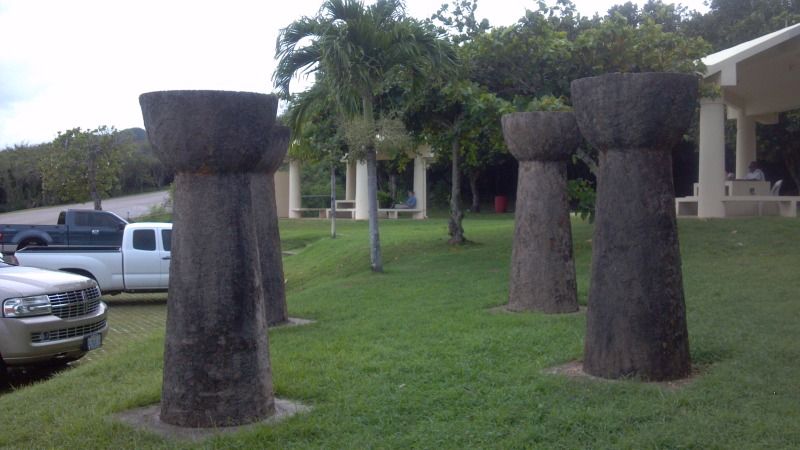
Latte stones are ancient structures that were used to erect shelters. Though the ones here are reproductions, the stones that still exist from that time are honored by the natives, reminding them of the complexity of their ancestors' culture. You can find the 'latte' symbol everywhere. One blogger was originally confused by it, thinking the natives really loved hockey and the Stanley Cup.
Saipan is also home to another indigenous population, the Carolinians, who arrived in 1815 after natural disasters in the Western Caroline Islands forced them to flee to other islands. They were led by two chiefs, Aghurubw and Nguschul, and given permission by the Spanish to settle on Saipan. Aghurubw was famous for wearing a top hat gifted to him by the Spanish. He still watches over the island, a statue of him standing on Managaha Island in Saipan's lagoon. However, the relationship between the Guamanians and the Saipanese has not always been a kind one. Ben Blaz in Nihi Ta Hasso relates that during World War II, the Saipanese treated the occupied Guamanians with the most brutality:
Being from the Northern Marianas, they should have been our brothers, our allies. Perhaps the American takeover of Guam and our ensuing forced separation from them affected how they viewed us. Perhaps their years under Japanese rule had turned them against anything remotely associated with the United States. Maybe they just thought they had something to prove. Whatever the cause, in most cases, the Saipanese were rasher in their treatment of us than the Japanese. They were more eager to inflict slapping and beating. They were rabid about making arrests.This tension that Blaz describes sometimes flares up today. After the war, when the Northern Islands were looking to reunite with Guam, the Guamanians searched for an alternative. They voted to keep their territorial status while the Northern Marianas Islands became part of a Commonwealth of the United States. Because of this decision, the Northerners also hold a resentment toward the south.
The result was that the people of Guam considered them traitors.
Like I mentioned earlier, the Islands have a long and interesting history, being handed off between foreign powers seemingly nilly-willy. Saipan itself has been under the purview of the Spanish (1500s-1899), the Germans (1899-1921), the Japanese (1921-1944), and currently, the Americans. Knowing all these cultures is important to understanding the island's heritage. The Catholic Church is as important here as it is on Guam, and many Spanish words and customs are in use today. There are also German influences on the local language--a true multilingual melting pot of spices--and a few German buildings still stand. As I talked about in Part I, the Japanese period was marked by a growth in the sugar cane and fishing industries which led to an economic vitality that the region had never seen. According to the American Memorial Park Museum (AMPM), they even began building "new roads, a narrow gauge [of] railway, and provide[d] jobs and free medical care." Because of these achievements, Saipan ended up holding a healthy sized Japanese population, which probably affected the way the natives saw them as Blaz was to note. As the Japanese geared up toward war, they used Saipan as an important jumping stone for men and supplies.
On June 15, 1944 at 8:40 a.m, the Americans landed on the beaches of Saipan. The impending invasion was costly to both sides. On the first day, known as "Dog-Day", thousands of Japanese troops would die, and over 2,000 Americans would be reported as causalities. Fleet Admiral Osami Nagano said of the event, "Hell is upon is." This invasion was the climax of aerial warfare and the bombing of the island, but by the end of the day, the U.S. servicemen had securely infiltrated the coast. Throughout the bombing, the Chamorro and Carolinian civilians had holed up in caves. When spotted by approaching Americans, they would present their Catholic icons to show whom they were.
According to the AMPM, "After 20 days of fighting, Garapan is turned to rubble. What had taken 20 years to build was destroyed in three weeks." Finally, on July 9, 1944, the Americans declared the island to be firmly under their control. After the fighting was over, over 43,000 American and Japanese servicemen had died. Native scouts were recruited by the military to hunt for holdouts, among other dangerous activities, and the 24th Infantry, only the second African American troop to see fighting during the war in the Pacific, was also sent to sniff out the remaining Japanese. The "airfields [in Saipan, Tinian, and Guam] are used to launch the new B-29 Superfortress bombers in air raids against the Japanese home islands. Tinian's North Field becomes the busiest airport in the world. Ports also provide American submarines with refueling and rearming stations 1,200 miles from Japan" (AMPM). Almost 100,000 American troops were stationed in Saipan during this time as it became a base for American activity. On August 6, 1945, the Enola Gay left for Hiroshima. Over 200,000 would die from that blast and the one in Nagasaki.
This information comes from the American Memorial Park Museum. The monument outside is also quite nice, but needs to be trimmed and mowed around.
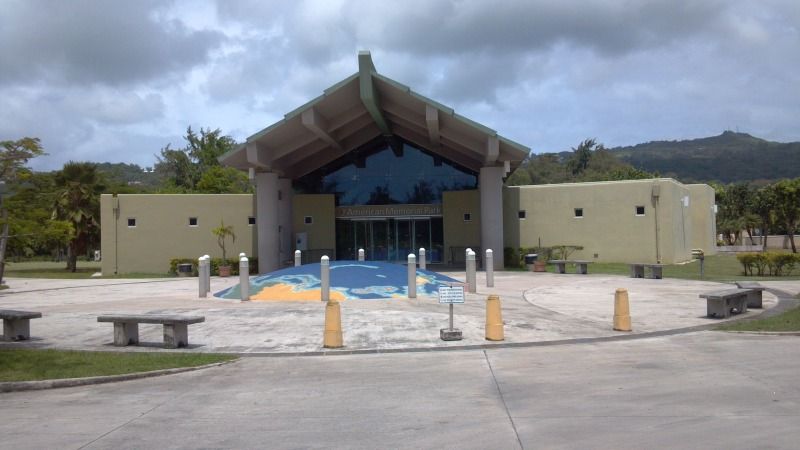
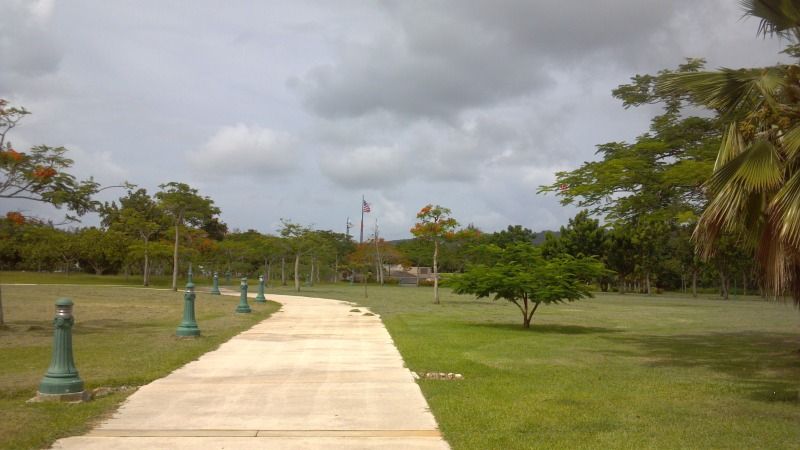
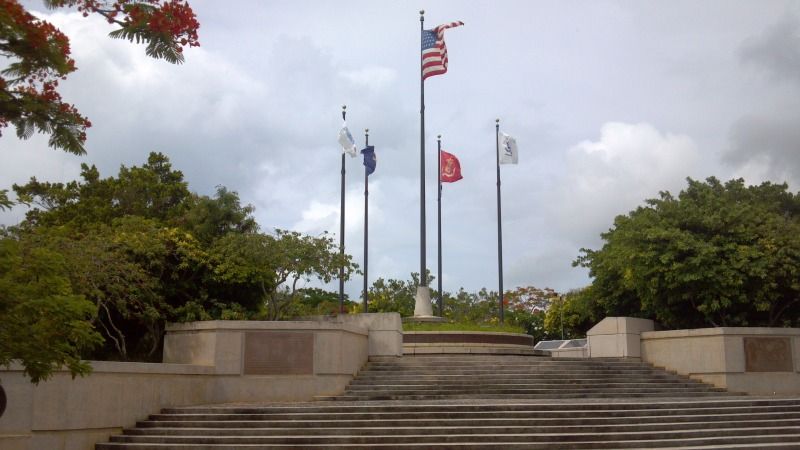
The Northern Marianas Islands Museum near the Sugar King park was also a resource. It is housed in an old Japanese prison.

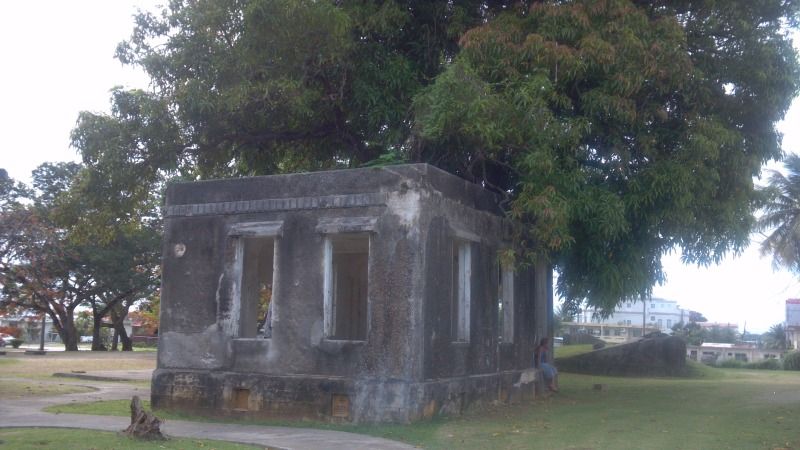
--------------------------------------------------
Casting their children ahead of them, or embracing the in death, parents plunged themselves from the cliffs into the jagged rocks below... A commander of a patrol craft said that progress of his boat around Marpi Point at this time was slow and tedious because of the hundreds of corpses floating in the water.
-- U.S. Military Report as told by The American Memorial Park Museum
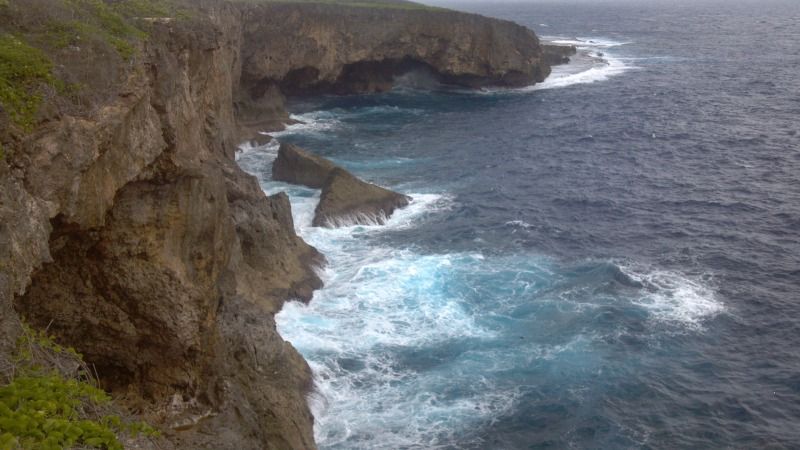
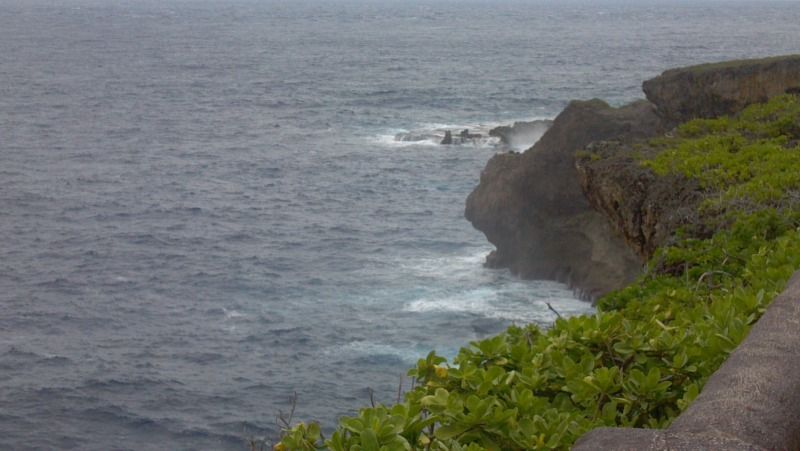
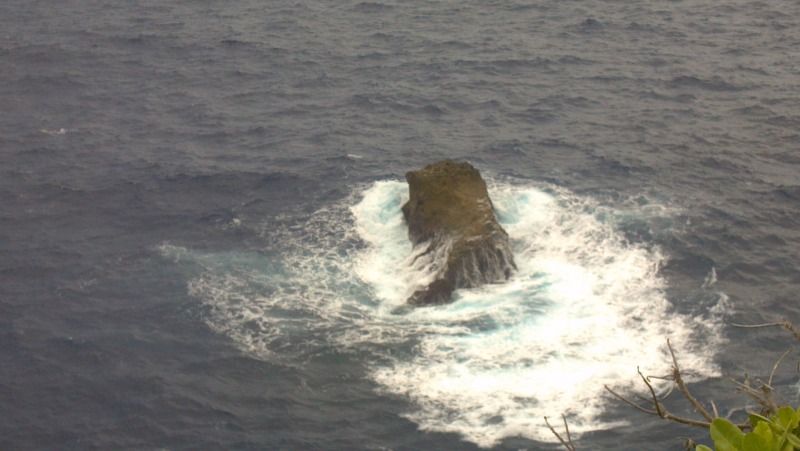

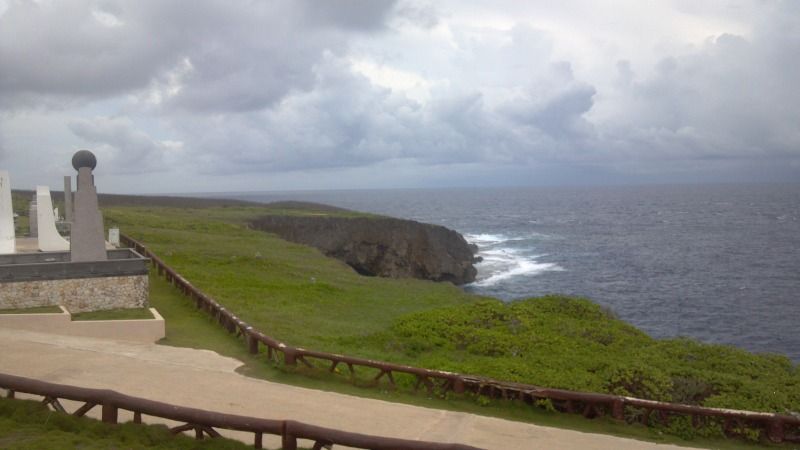
Banzai Cliff overlooks the sea on the north side of the island. In fact, its blue water is one of the first thing you notice--even the crashing waves hold their color, lightening with the rocks underneath them. Standing there though, you hear all those voices, all those tears, all those grimaced looks of war-weary troops, that sweat, pain, fear, and unknowing. I can see the Japanese soldiers marching to that cliff's edge. Over 10,000 people killed themselves here. Closed in by the advancing American troops, they threw themselves off to their doom. Tales of babies killed by their own mothers were one of the factors that led the U.S. to bomb the Nippon Motherland. If they could do that themselves, who knows how hard they would fight at home? Saipan was different than Guam. It had held a stable Japanese population from before the war, with 25,000, mostly from Okinawa, living there. You can hear a recount by an American troop watching the mass suicide at the American Memorial Park Museum. The Americans tried to tell them they wouldn't hurt them, and even attempted to save a few in the water. But it was of little use. Most of the remaining population died there. The Japanese and Korean who did survive were later repatriated back to their home countries. Their people gone but their spirits still thrive.
I stood looking out at the sea, almost feeling like an intruder on another people's tragedy. There were also Japanese tourists of course, but my reluctance soon wavered. Three young Japanese teens were taking pictures of themselves laughing and jumping in the air. They obviously had little reverence for this location. Others did of course. Another Japanese couple stood nearby staring out like I was. I would later see another woman lighting incense under the Buddha statue. She bowed before it and humbly stood there.
A series of monuments were lined up along the edge. They honored those who jumped to their deaths, their spirits hopefully finding some solace in the works of the living. If there are ghosts, then surely there are some here. Most of the shines had a message of peace. Underneath would be incense, or some other token of honor. Images of people lighting candles in the middle of the night and bowing before their fallen grandfather's shrine are in my head. I know this is romanticized, but it is what I see.
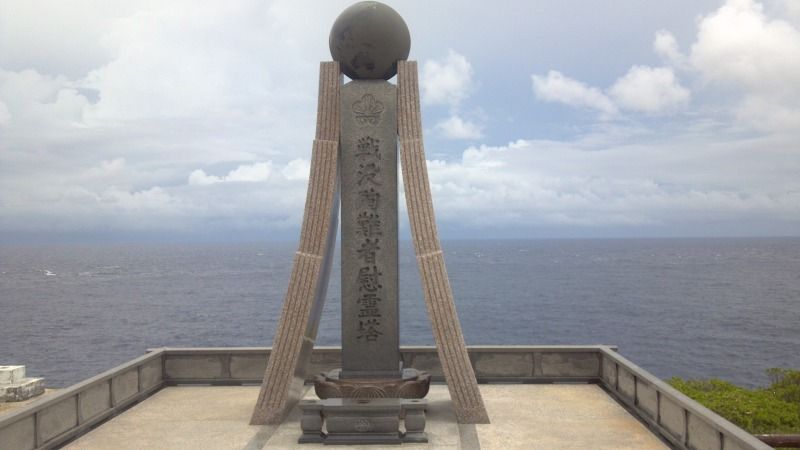


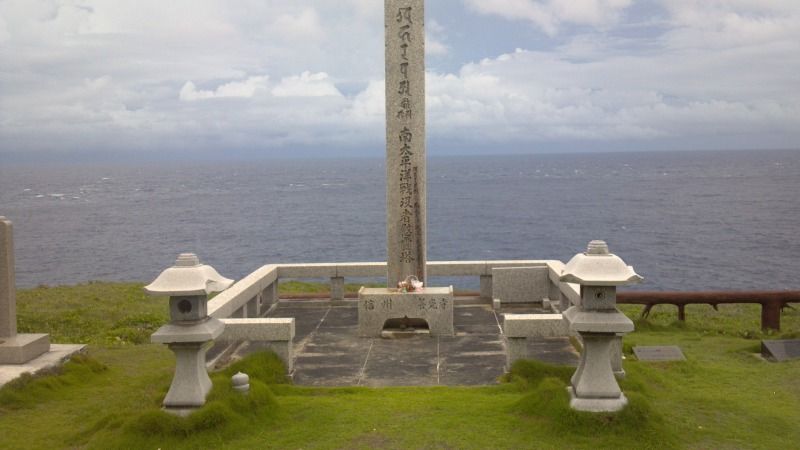
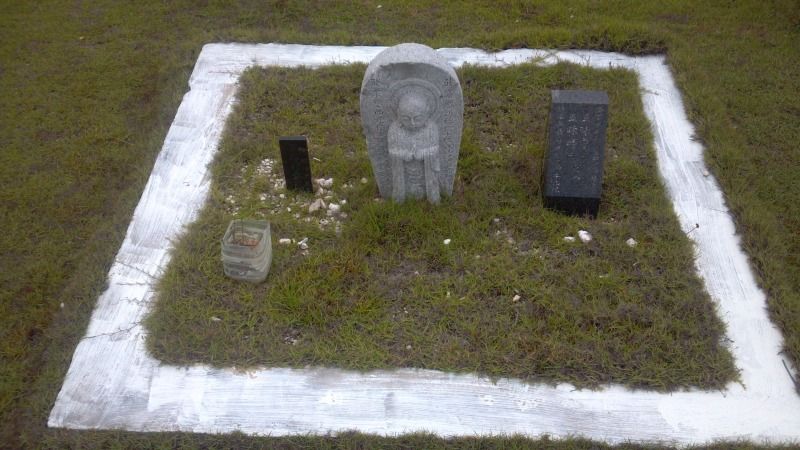
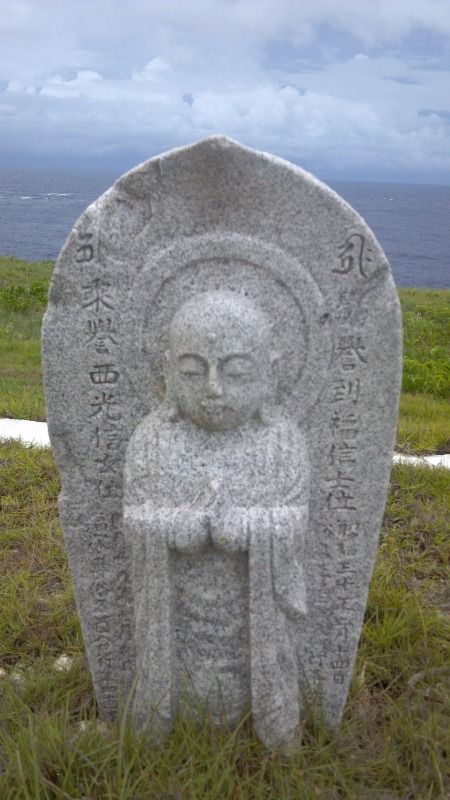
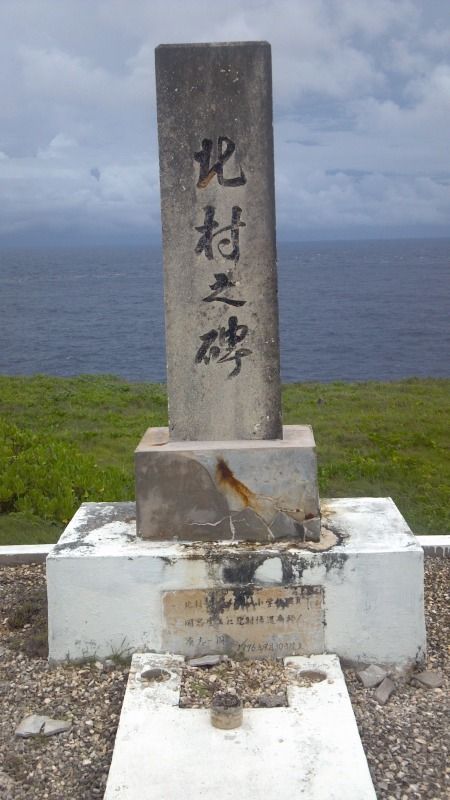
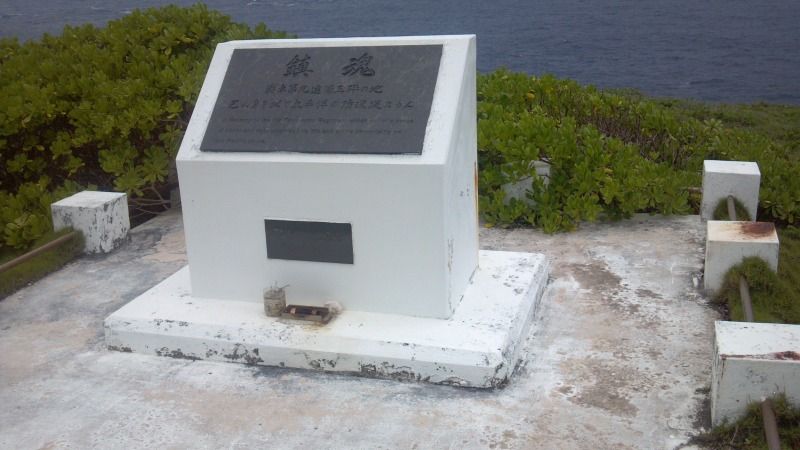
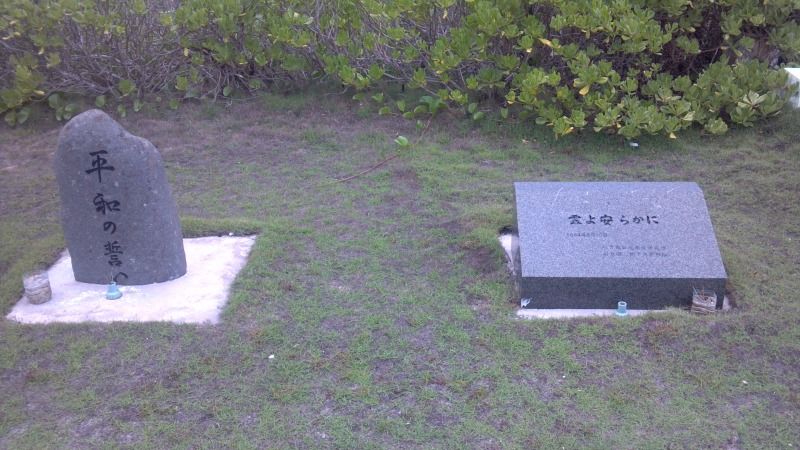
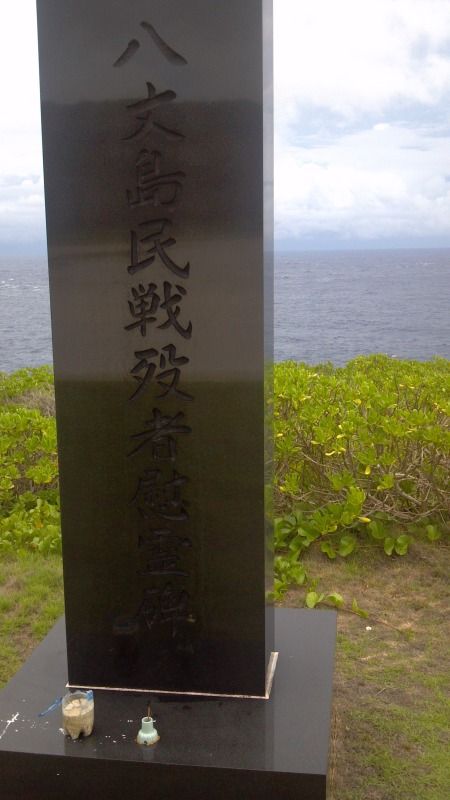
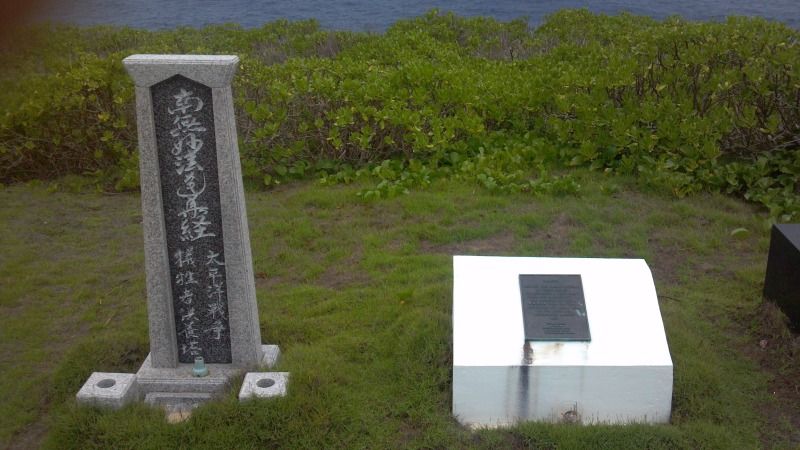
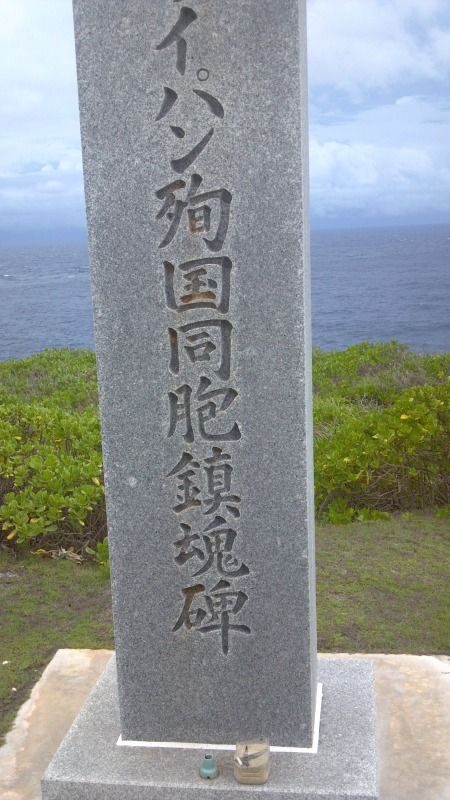
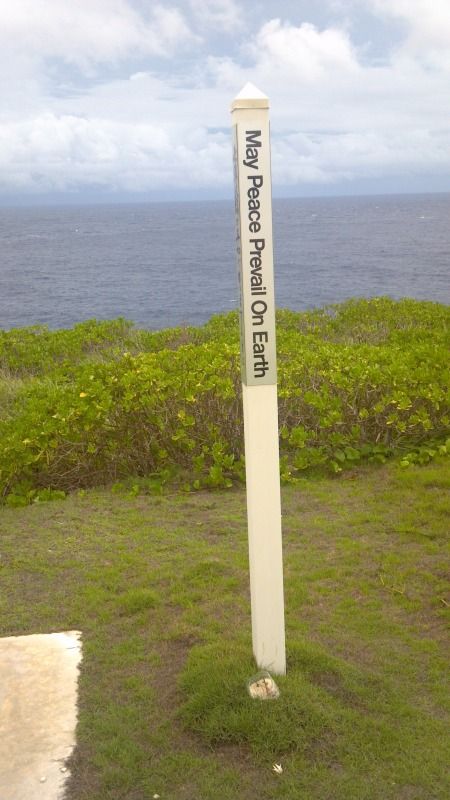

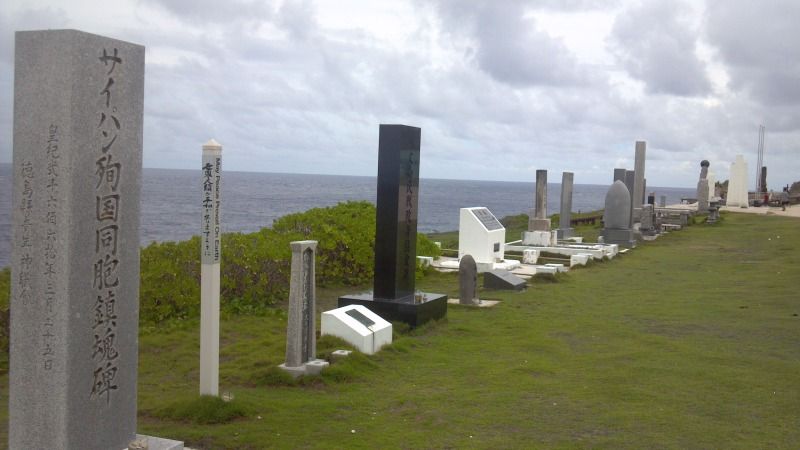
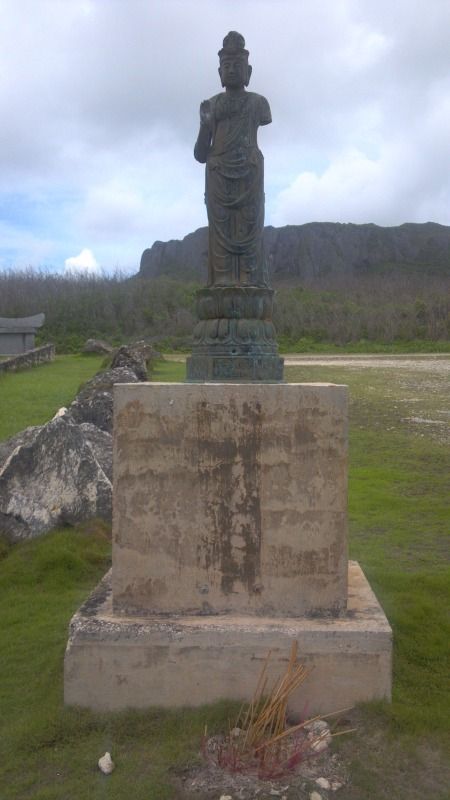
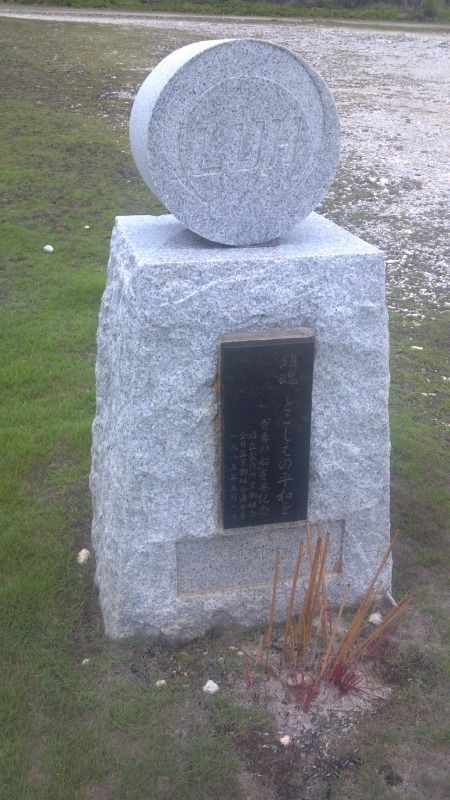
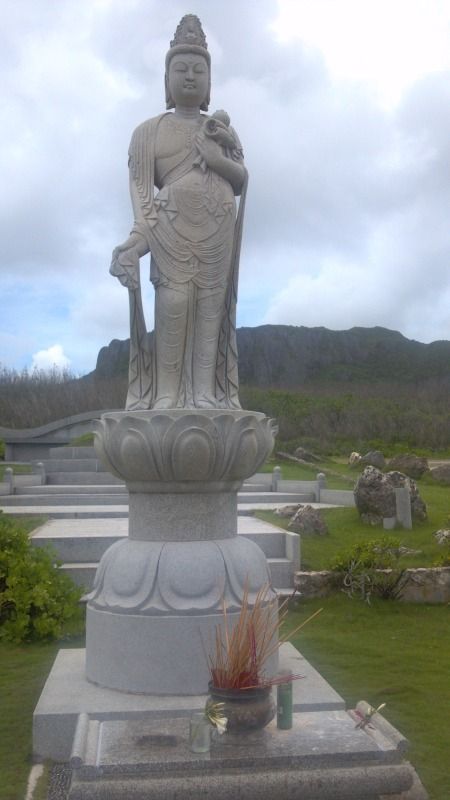
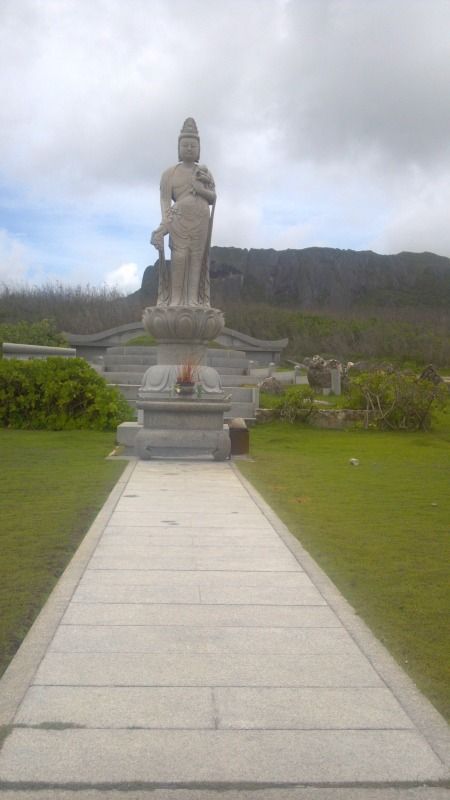
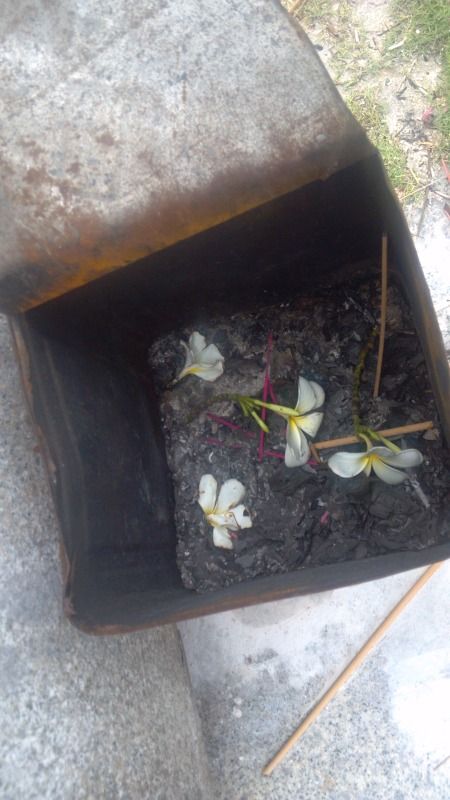
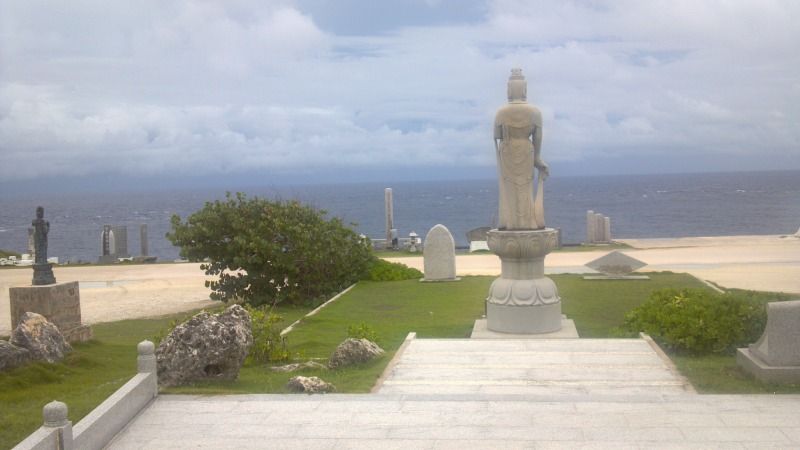
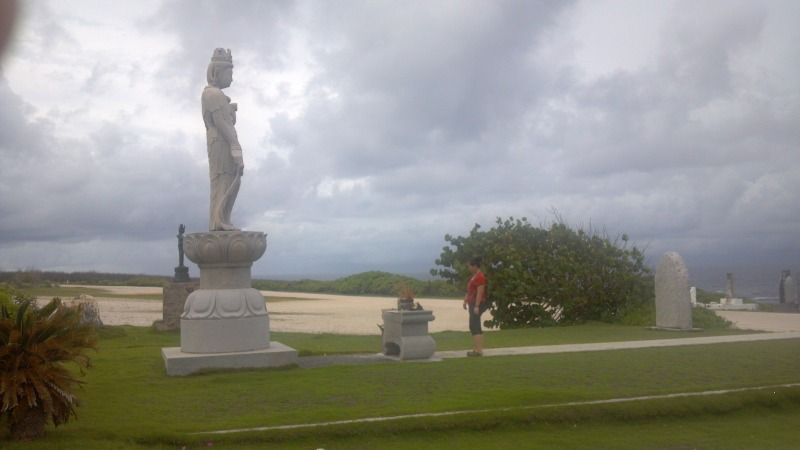
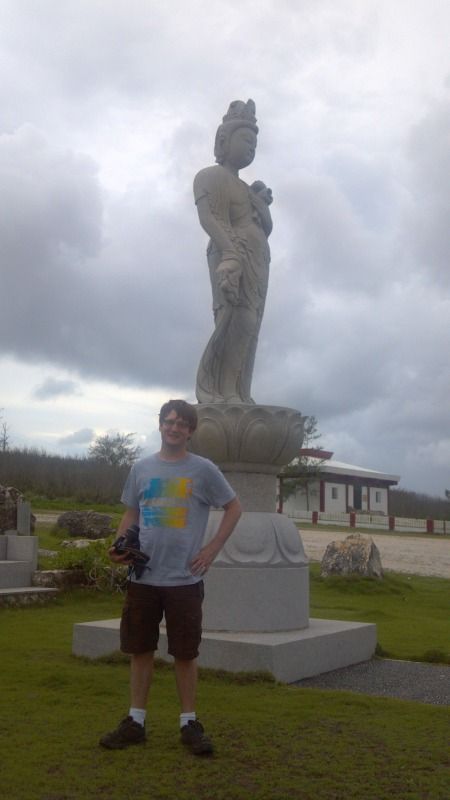
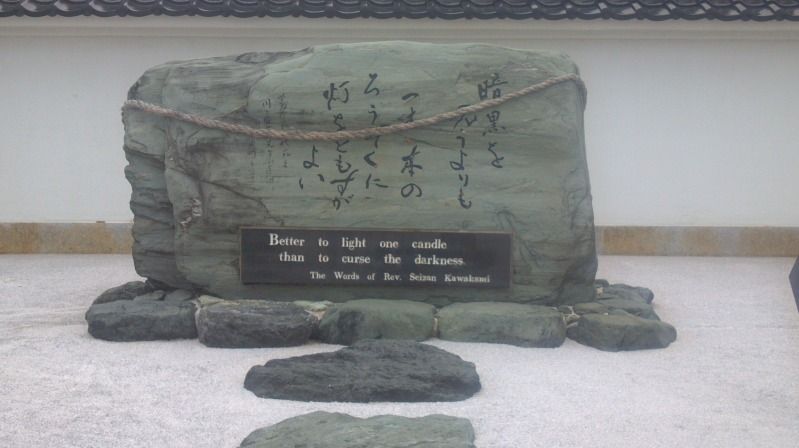
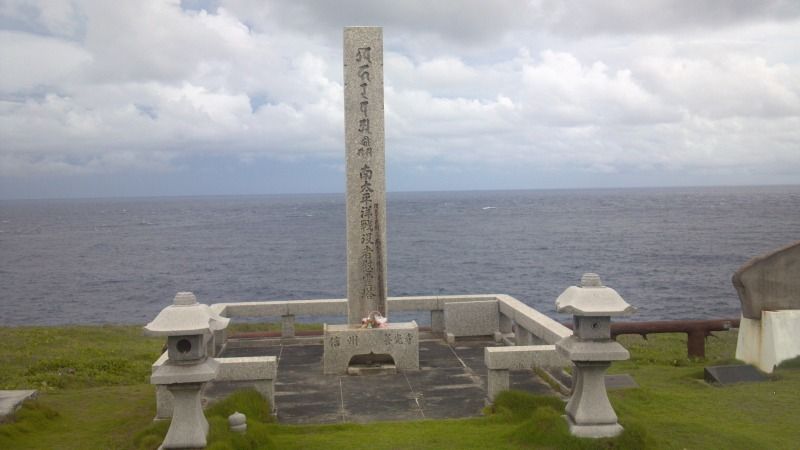
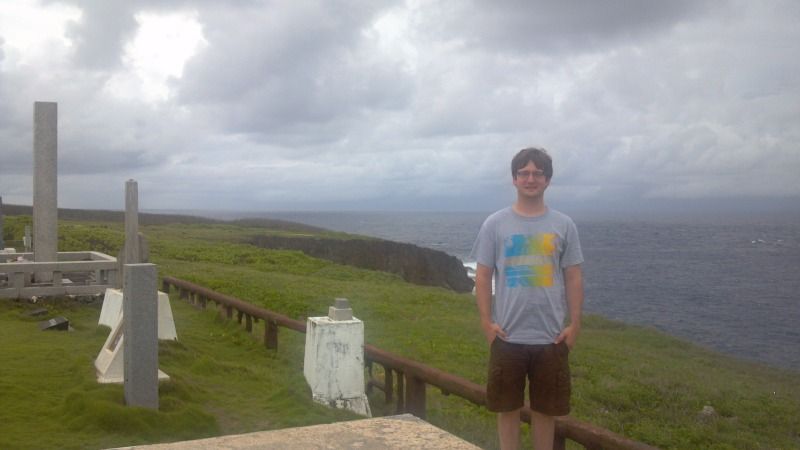
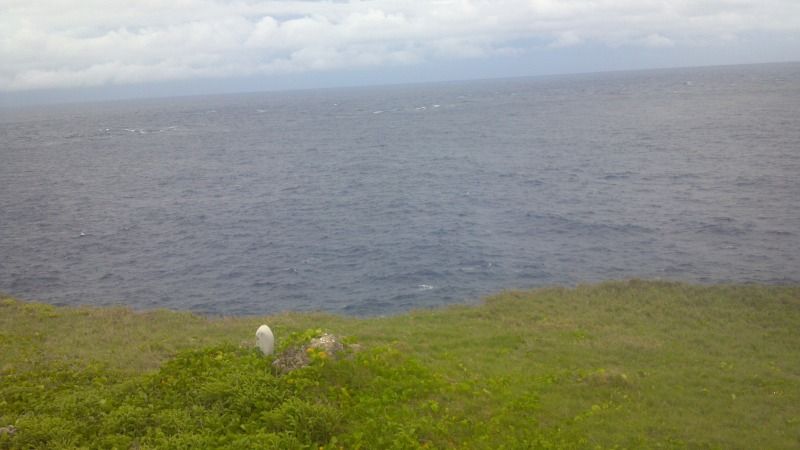
A little farther ways up from this cliff is the final hold-out of the Japanese. It's surrounded by rusting cannons, rockets, and tanks, clearly brought there from somewhere else, but you can't help but feel the history everywhere you place your foot. Who knows what unspeakable horrors happened? How many men breathed their final breath where you stand? Again, I felt like I almost shouldn't be there. These weren't my people who died. In fact, my countrymen would have been the ones shooting them. Ben Blaz also talks of his mixed feelings about the Japanese visiting old Chamorro cave-digs during the war. Not to say that my experience is any way analogous to what he went through, but I also feel a certain odd schism in what I should be feeling as I tour these areas.
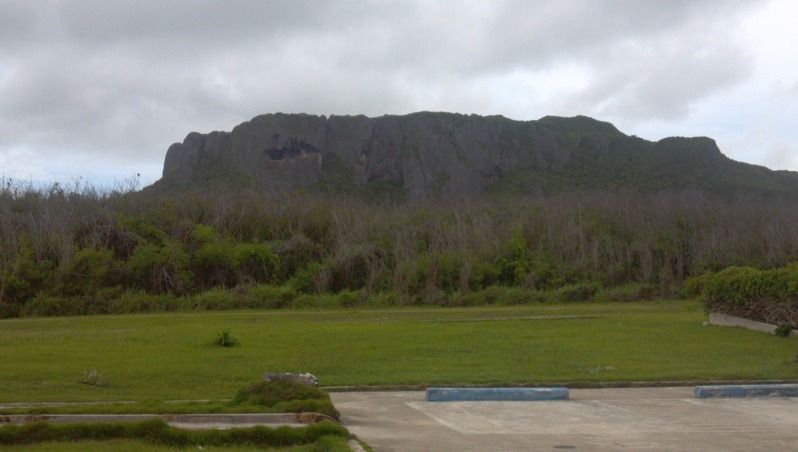
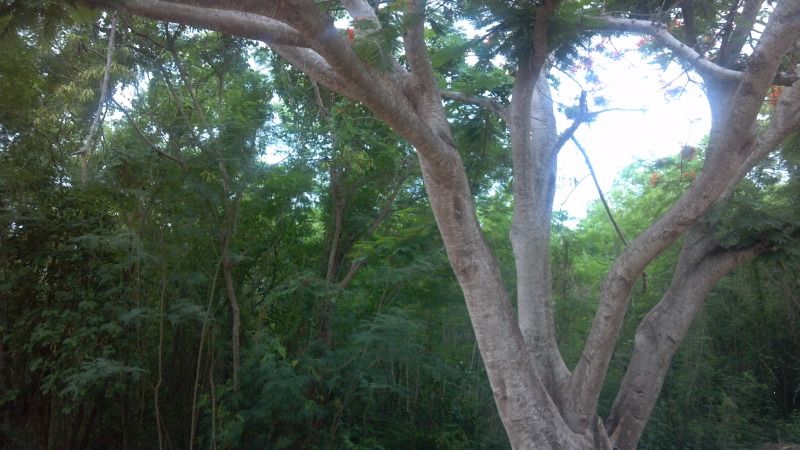
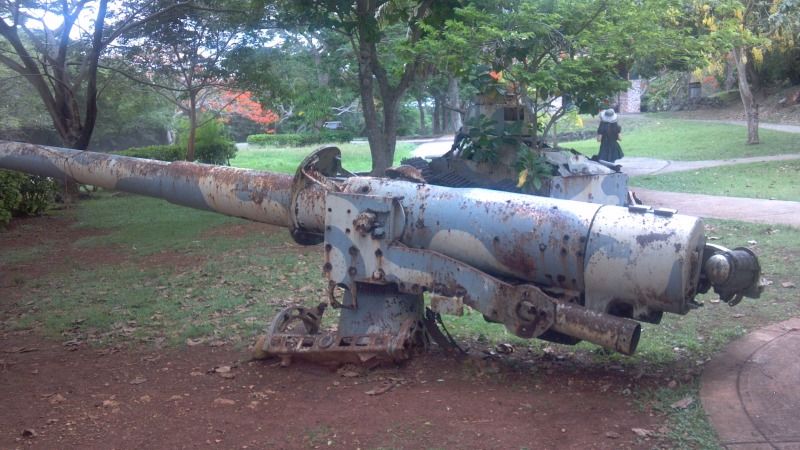
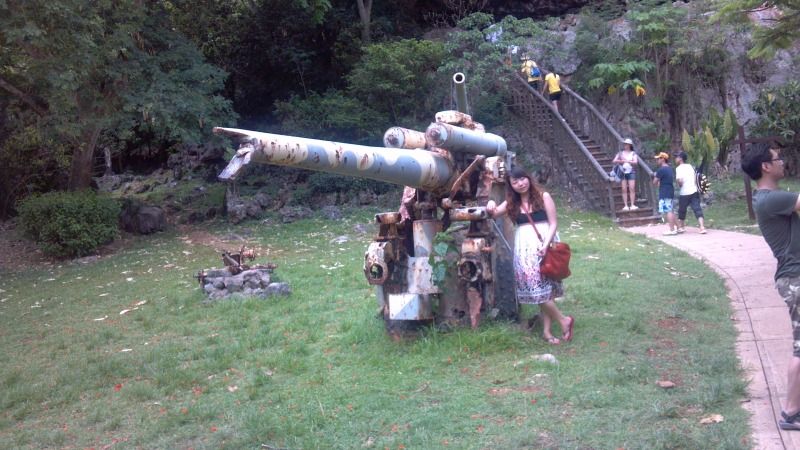

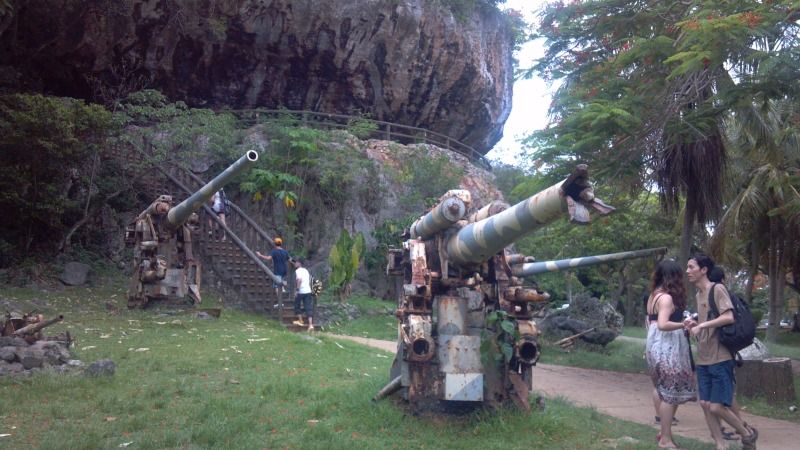
 The flame trees, as always, beautiful.
The flame trees, as always, beautiful. 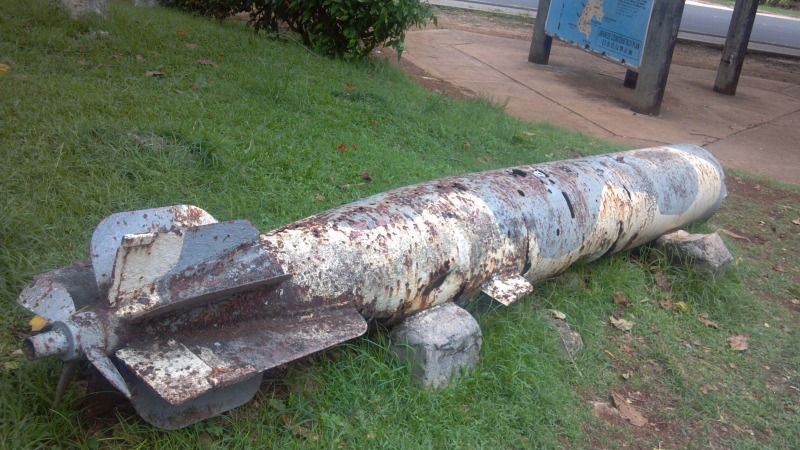
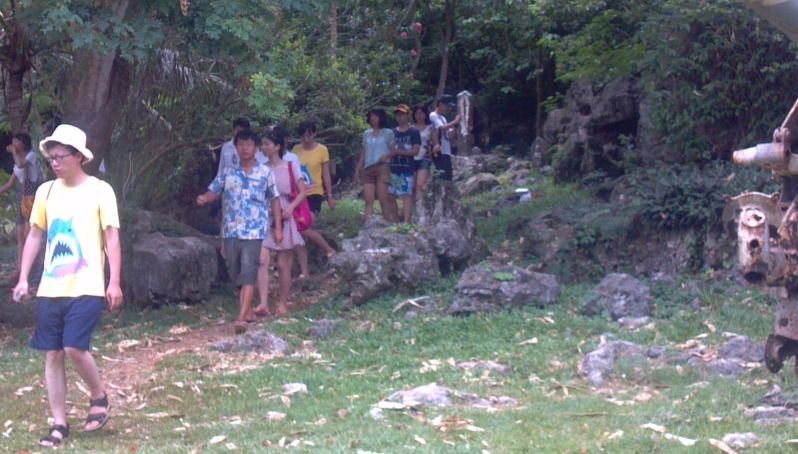
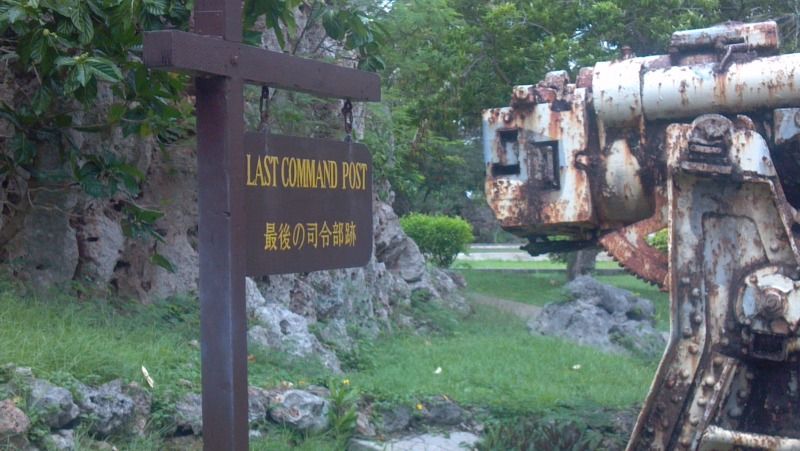
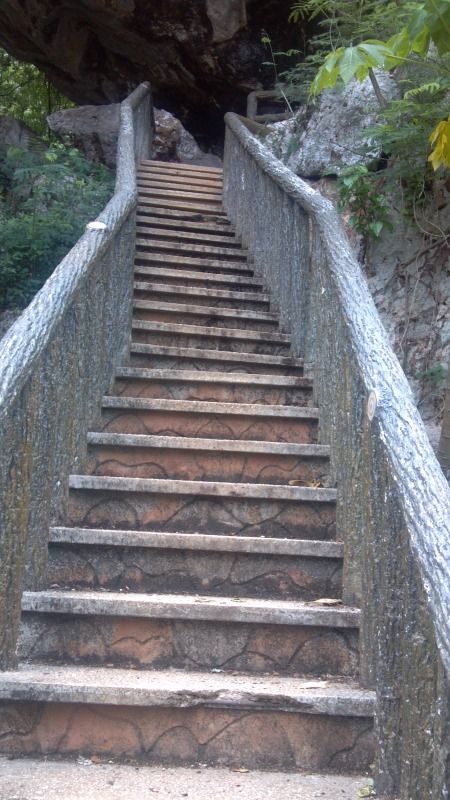
After you walk up these stairs you find a room dug from the stone. It's easy to hit your head in this cave if you aren't careful, the Lord knows I did. You can see where the soldiers would point their guns out, and even a few bullet holes. Again, I get a powerful image of helmeted Japanese boys falling down dead.


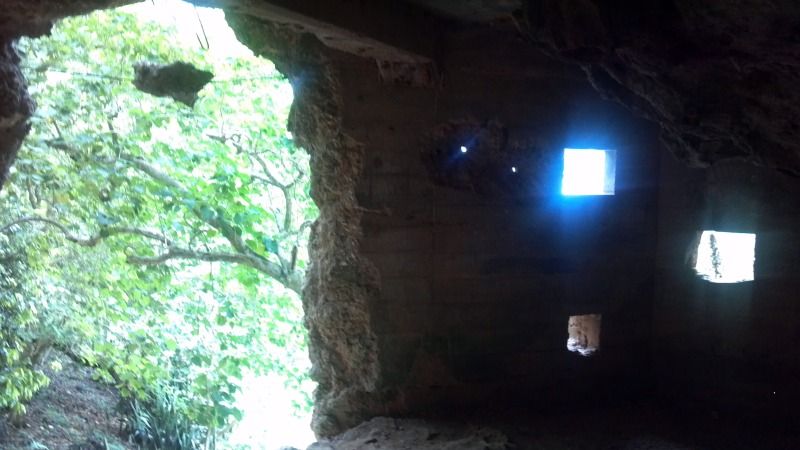
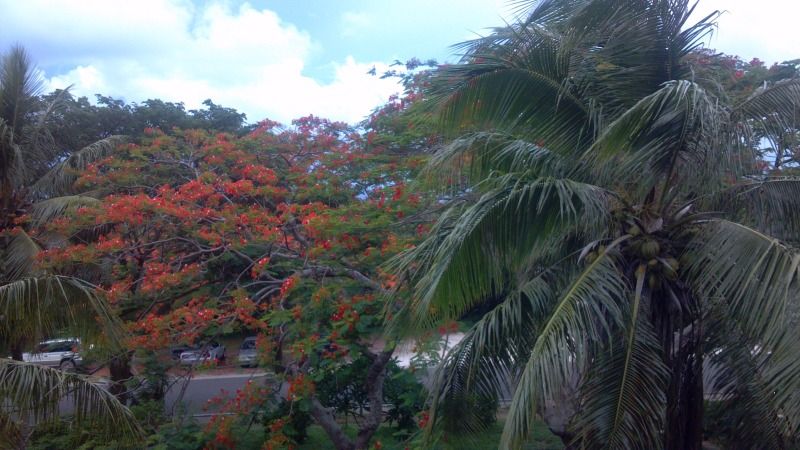
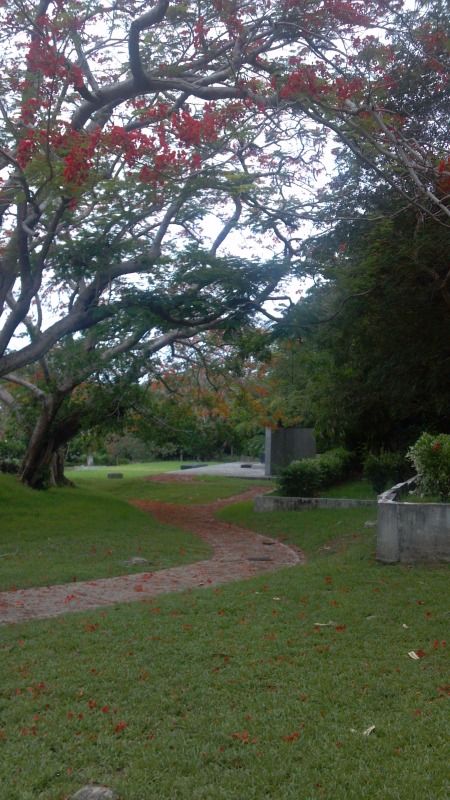
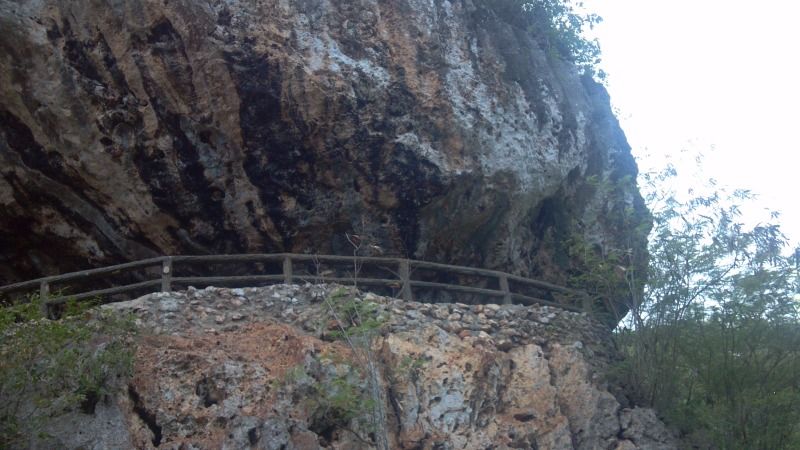
Today, the path is eating into the rock, so a wide stone wall is jutting out over you as you make your way to the cave. Birds and bugs are all over the thing. I also forgot to mention that unlike Guam, there are no snakes here. Thus, the jungle is not silent, but full of the chatter of life.
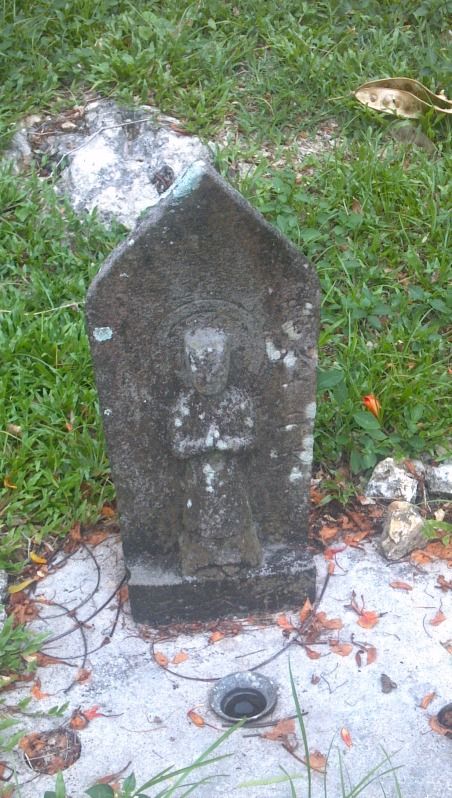
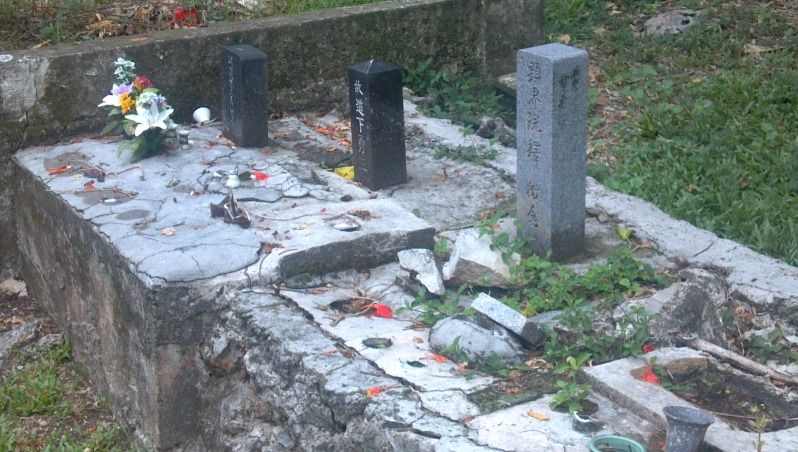
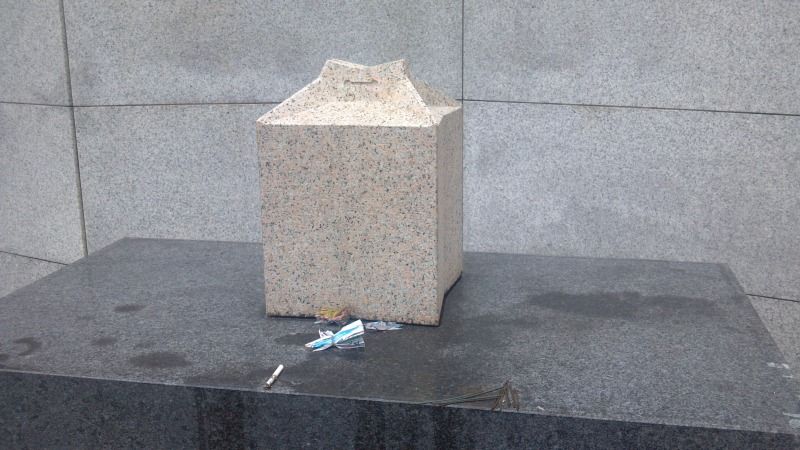
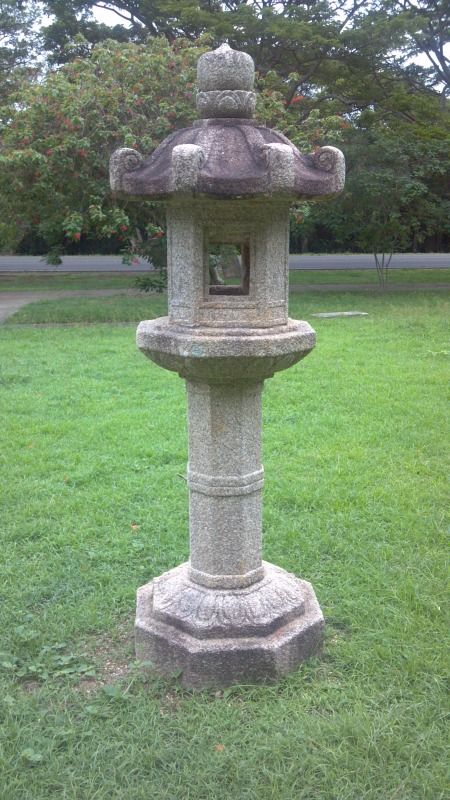
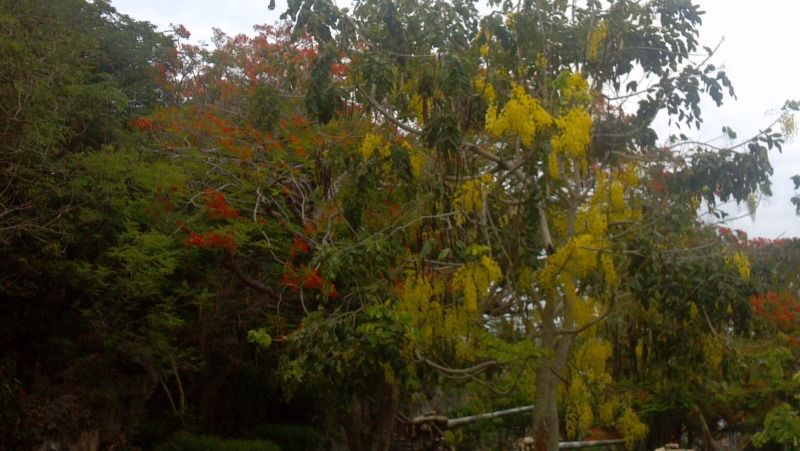
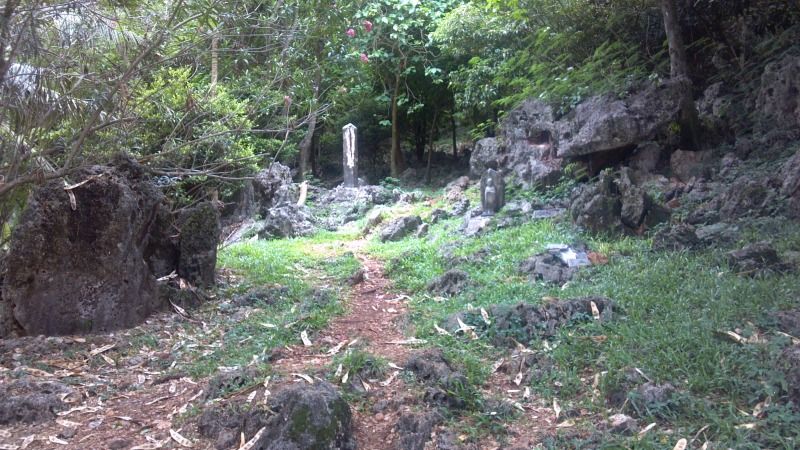

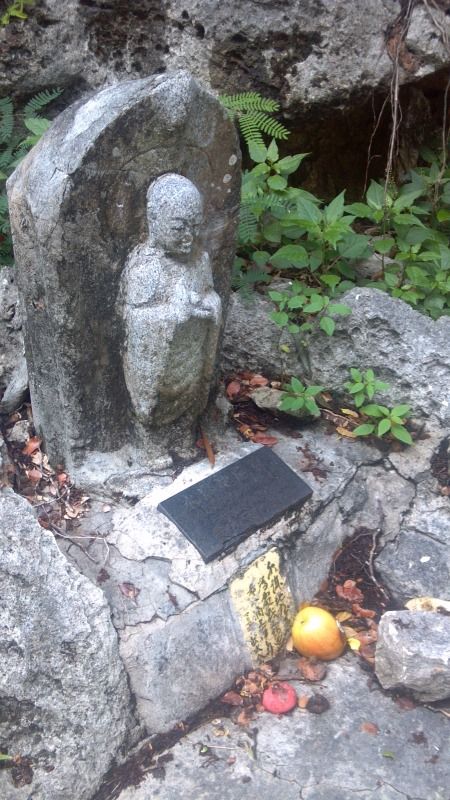
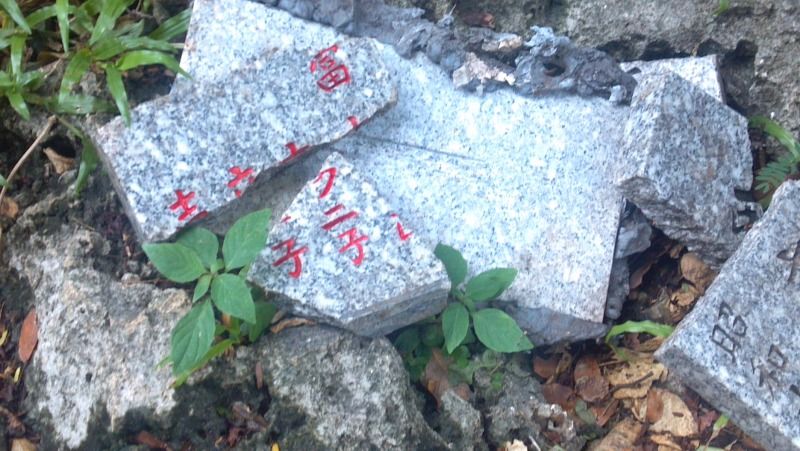
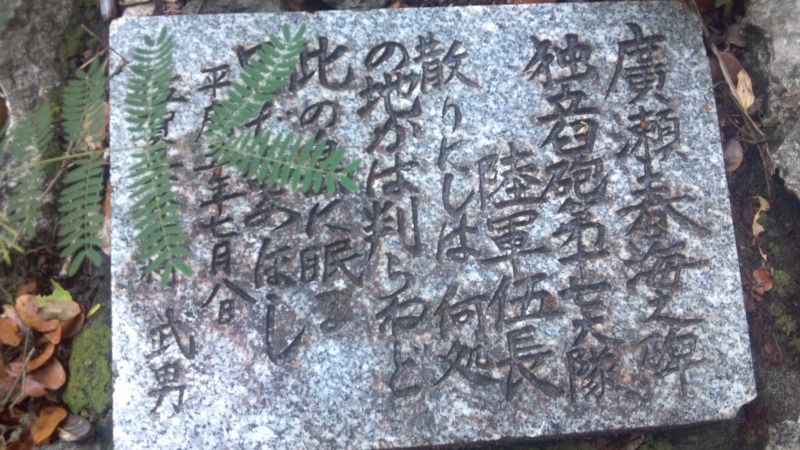
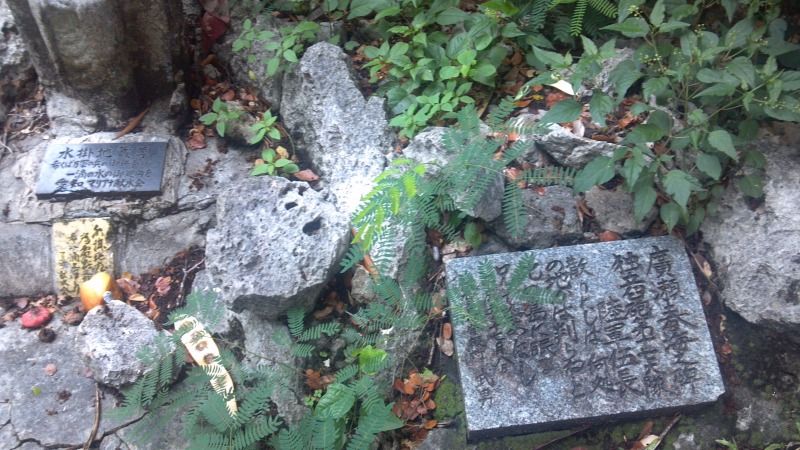
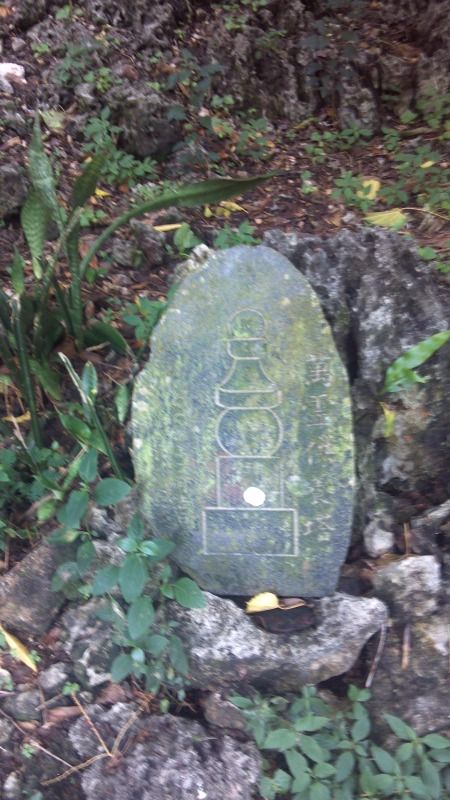
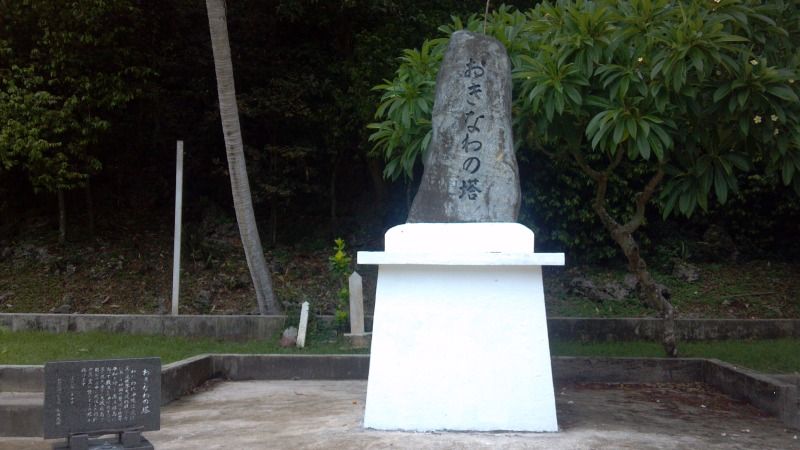

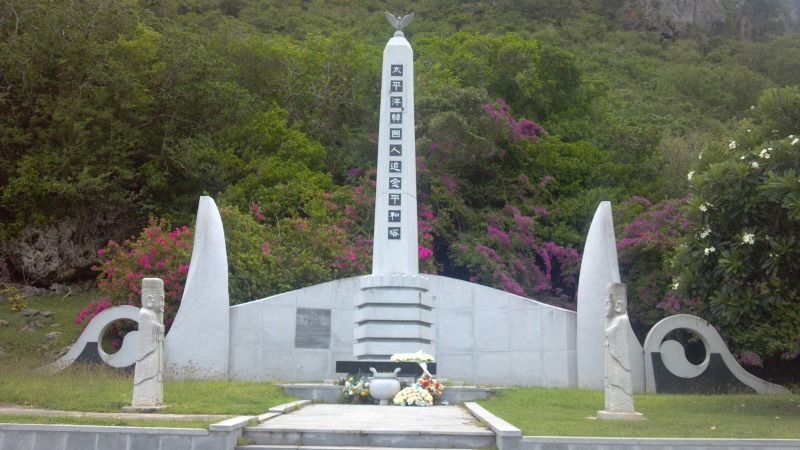
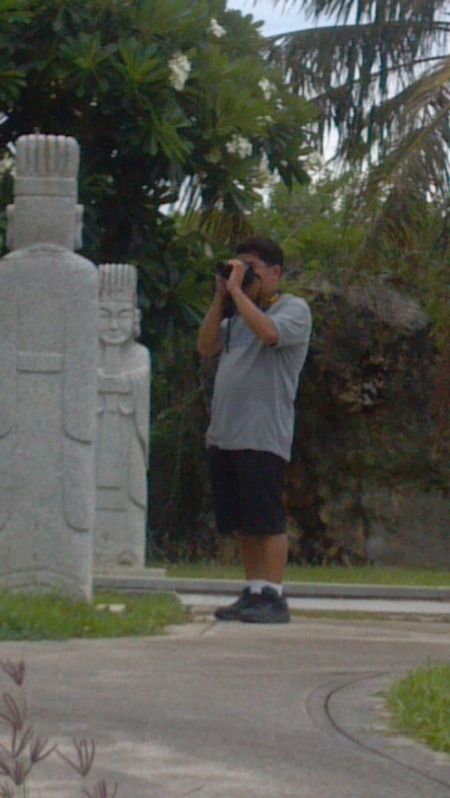
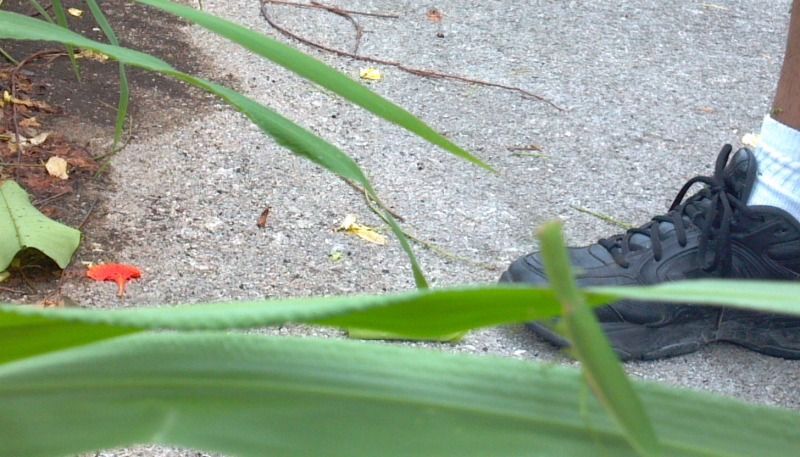 A praying mantis
A praying mantis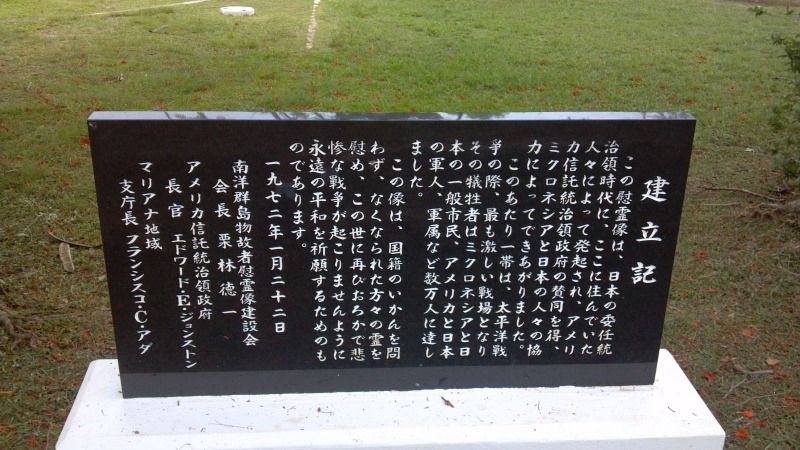
This place is also covered in little shrines. They might be my favorite part about these areas. I get a sense of spiritual sublime-ness being next to them. Often, like the one statue with an apple before it, some traveler has offered a token to the spirit.
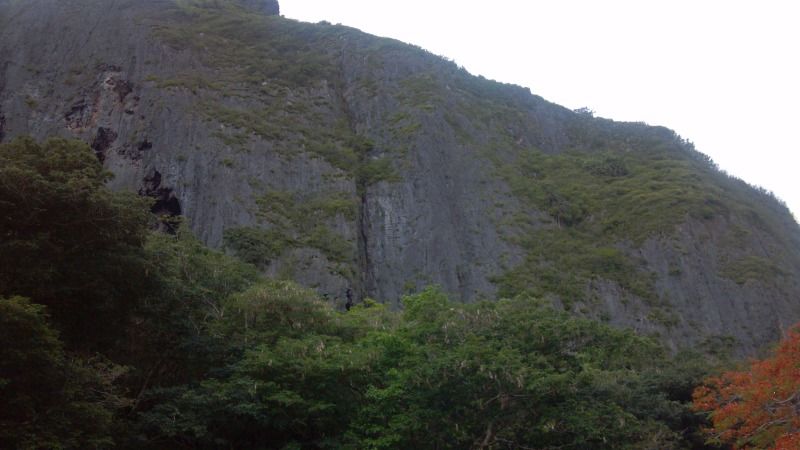
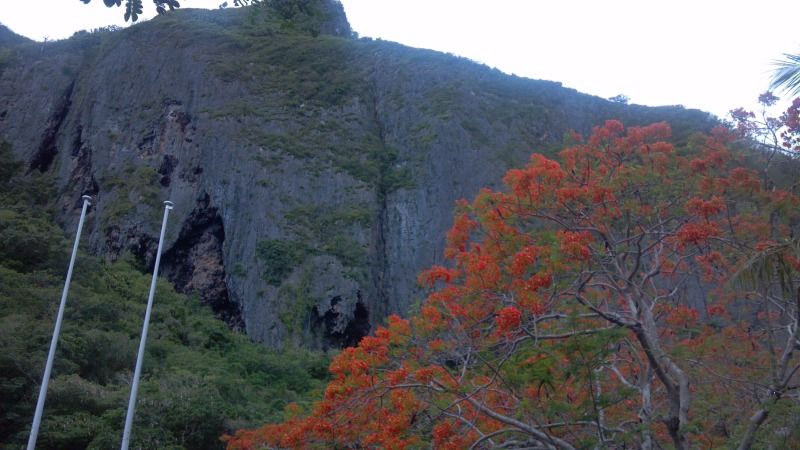
This cliff is Suicide Cliff. Unlike Banzai, where Japanese soldiers died, many of the civilians killed themselves off this jutting stone. When looking at it, you can see the face of two demons. One looks like a dying man trying to breath in air; the other is reptilian in character, almost smiling. If one thinks about it too much, well, the thought of such stone monsters can haunt. We drove to the top of the cliff so the next few photos will be from the peak.
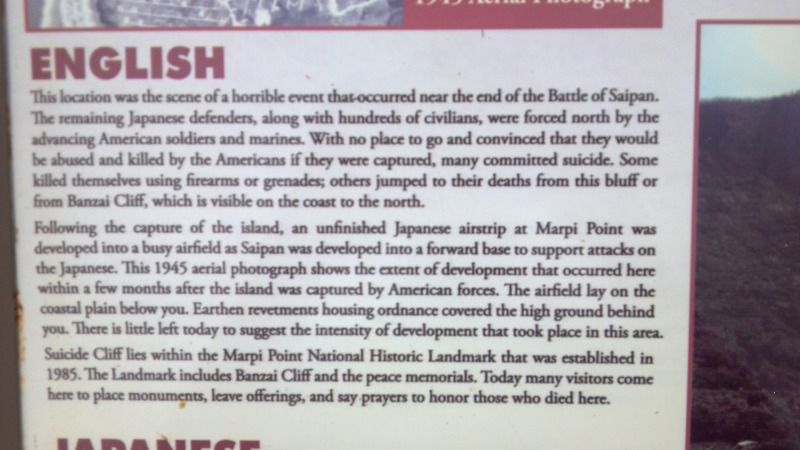
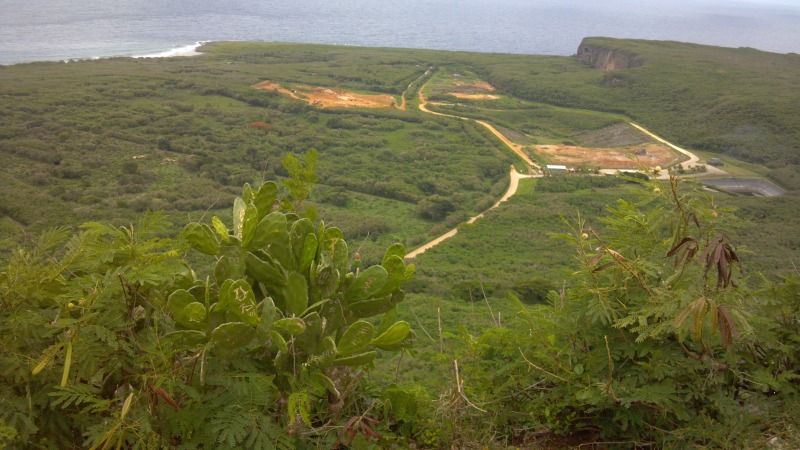

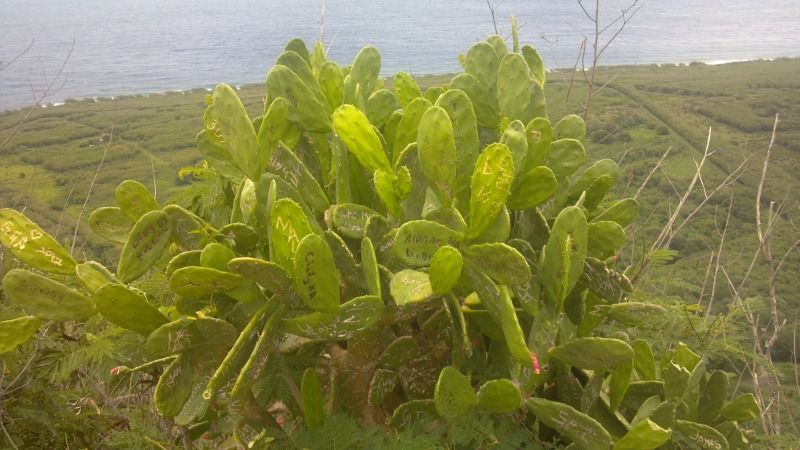
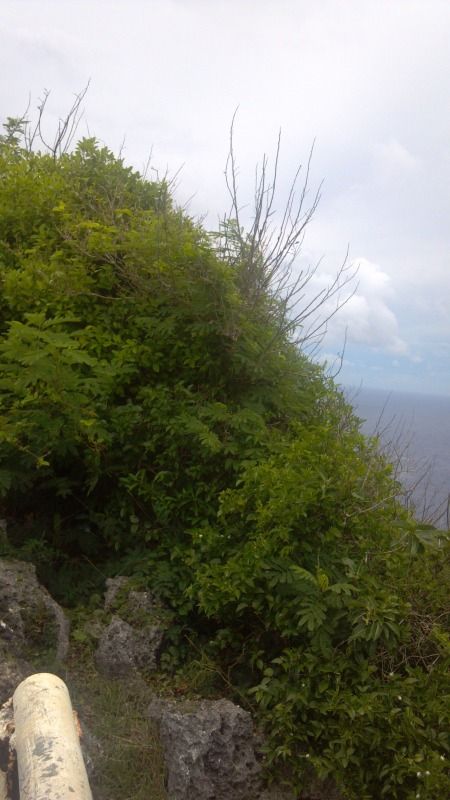
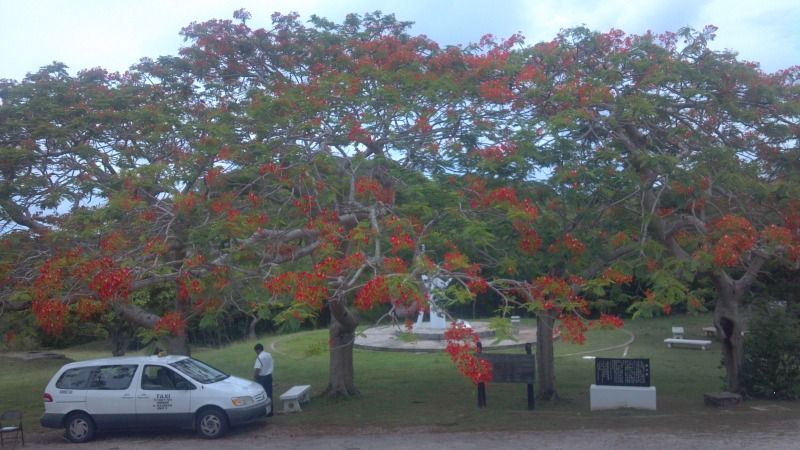

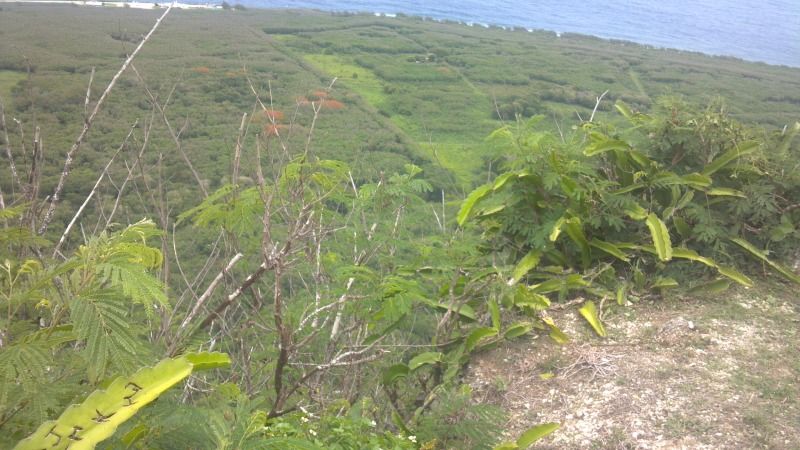
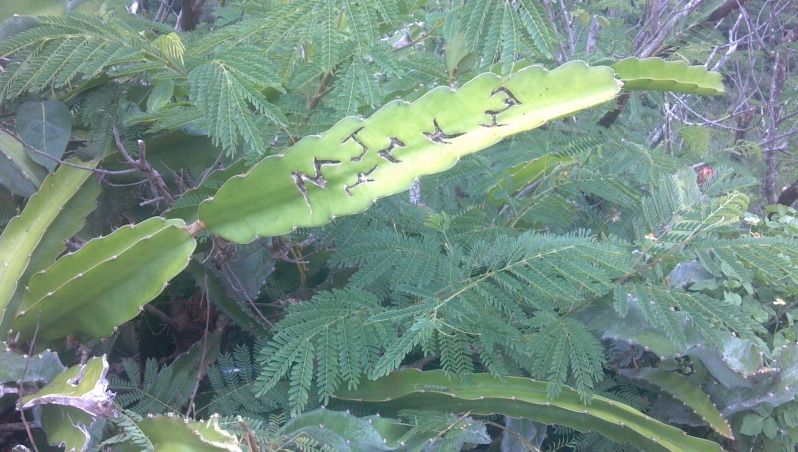
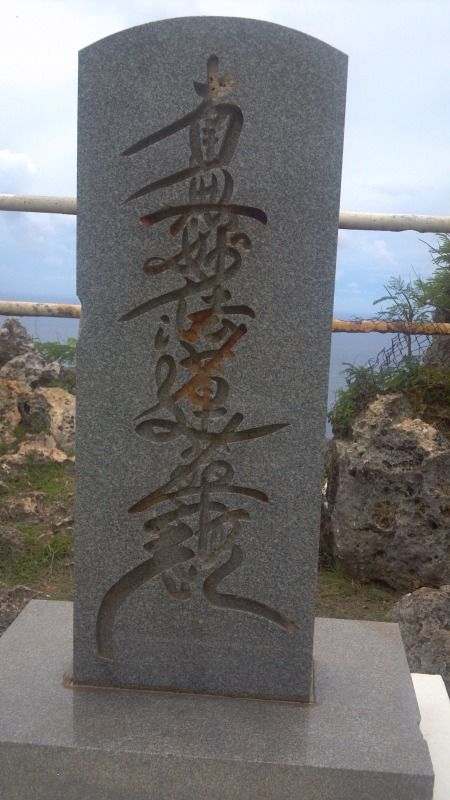
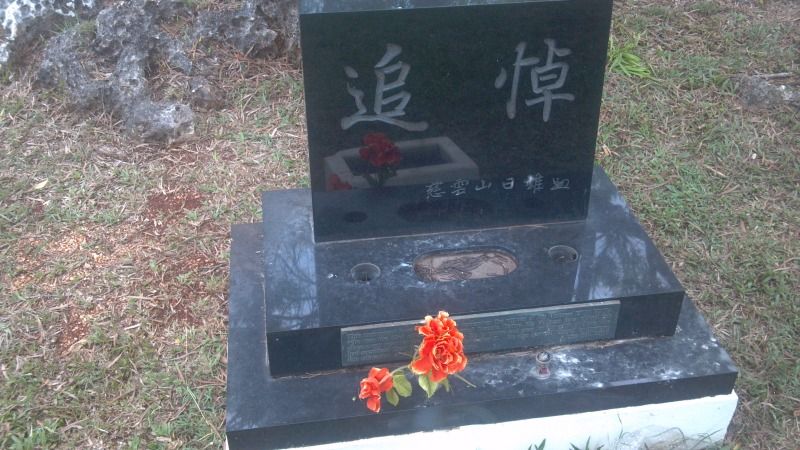
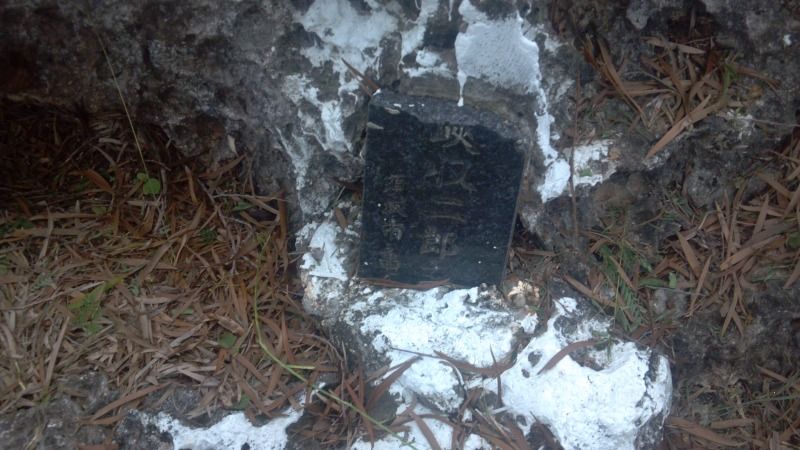
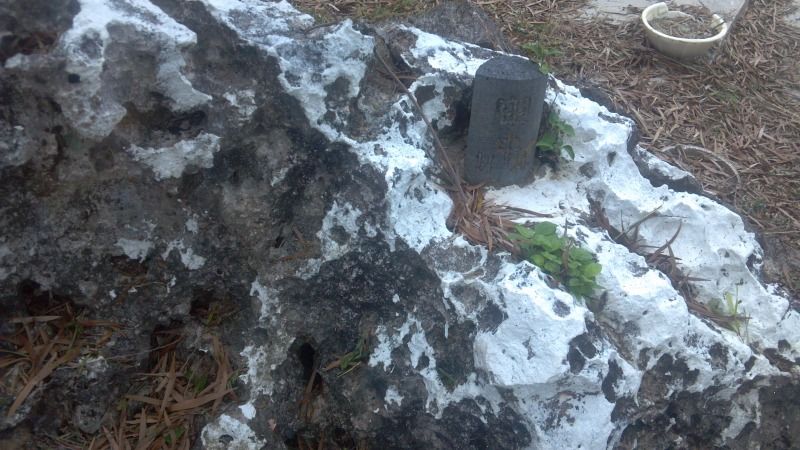
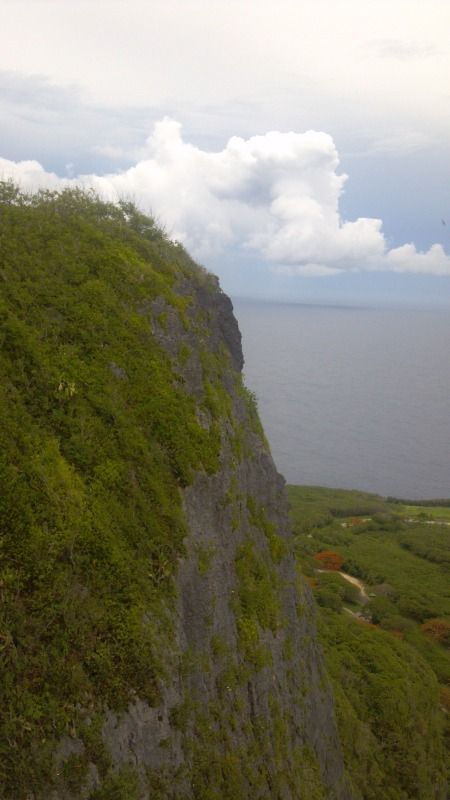

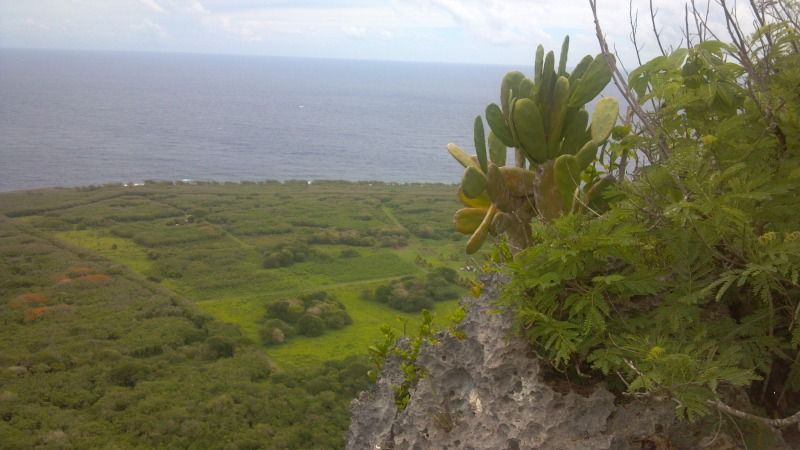

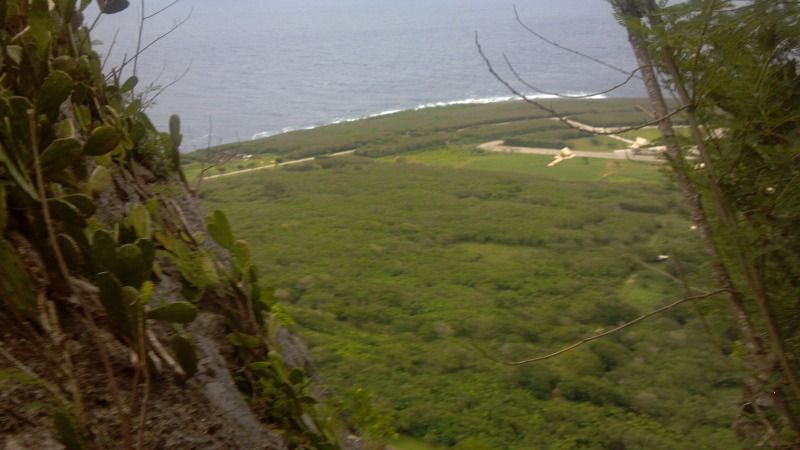
You can see the many people who wrote their names on the cacti. I do not know the purpose or even what is said on them; I can only imagine its some small way to mark the land where their ancestors' died.
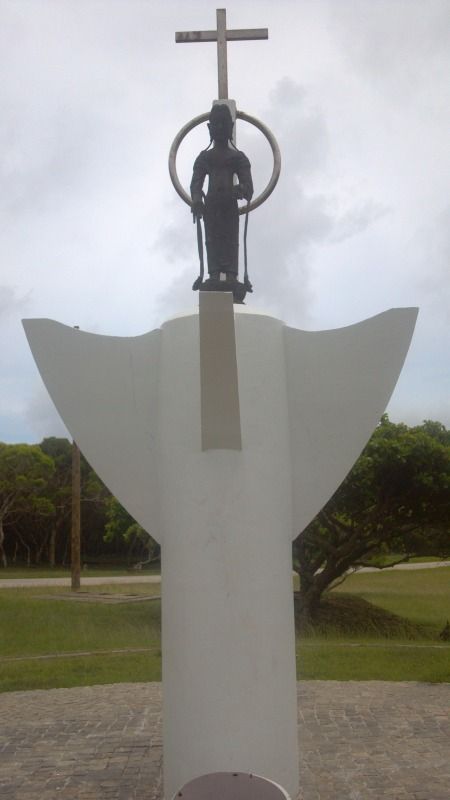
In this statue you can see an image of Buddha juxtaposed over the cross. Peace really to all peoples.
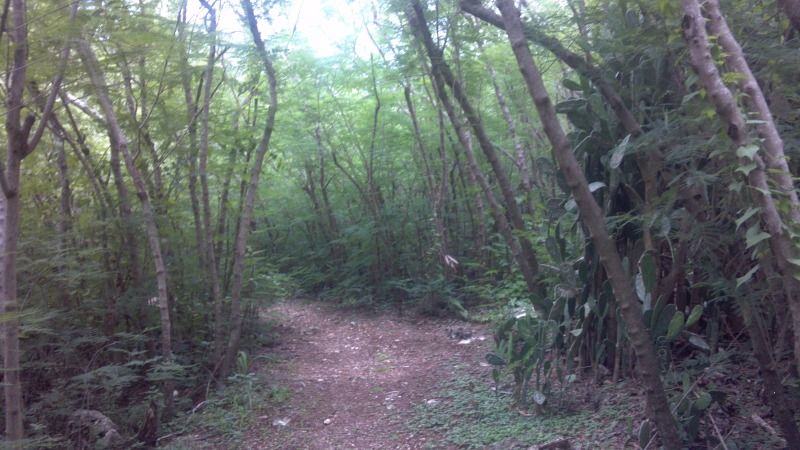
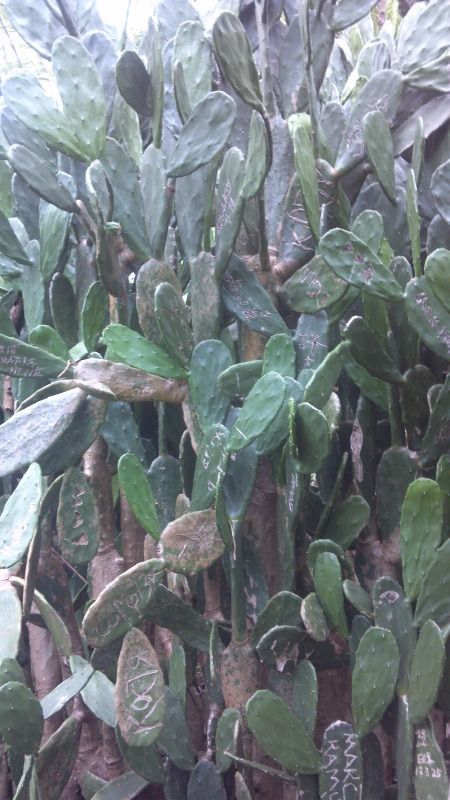
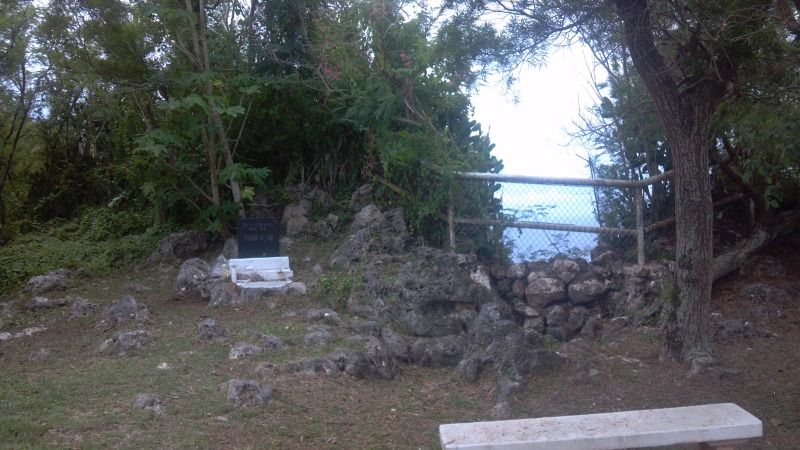
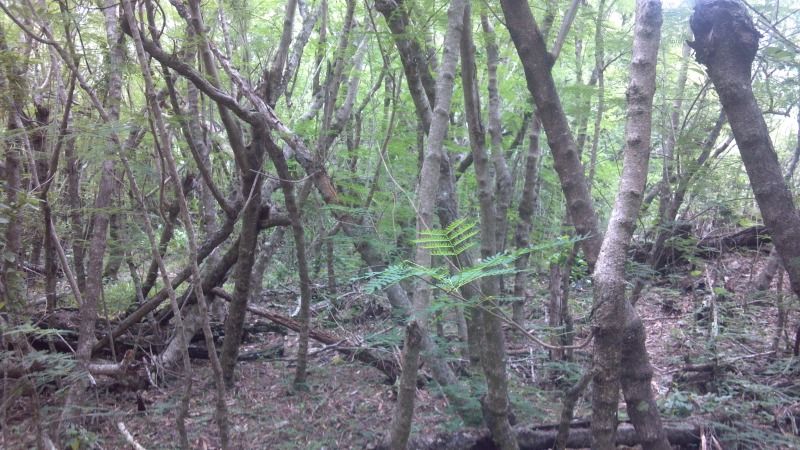
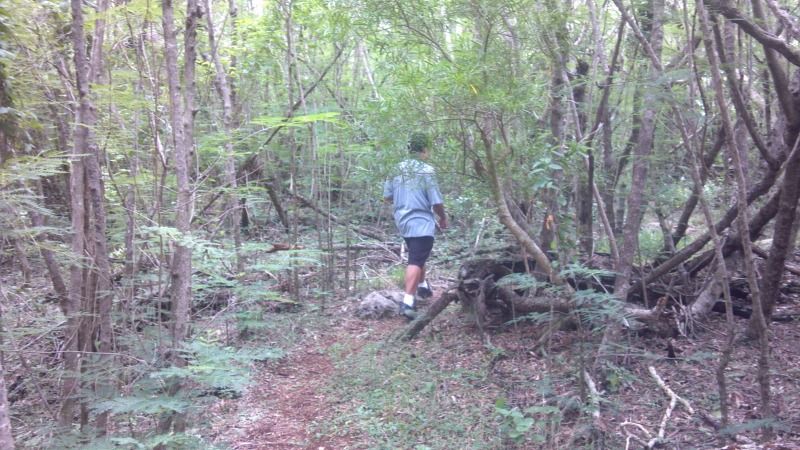
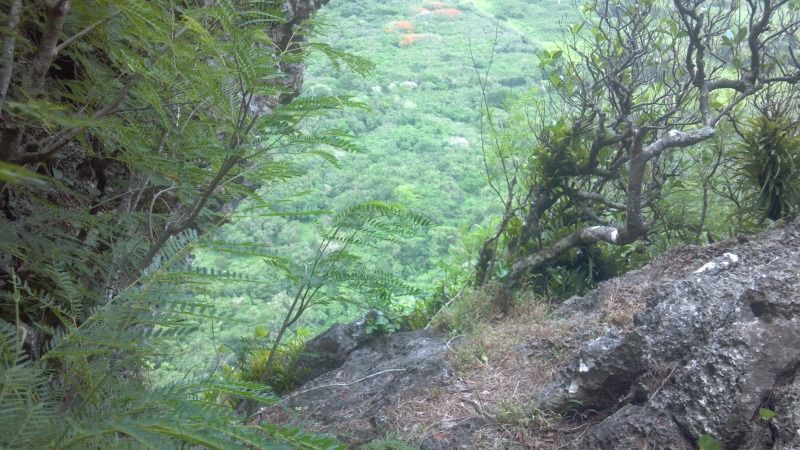
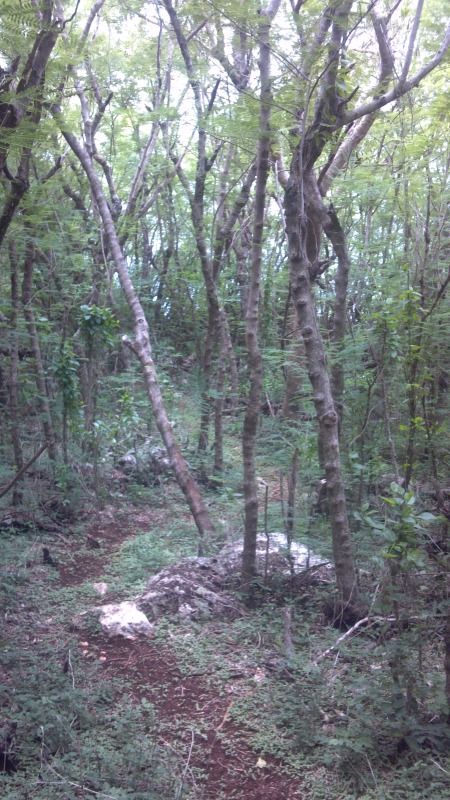
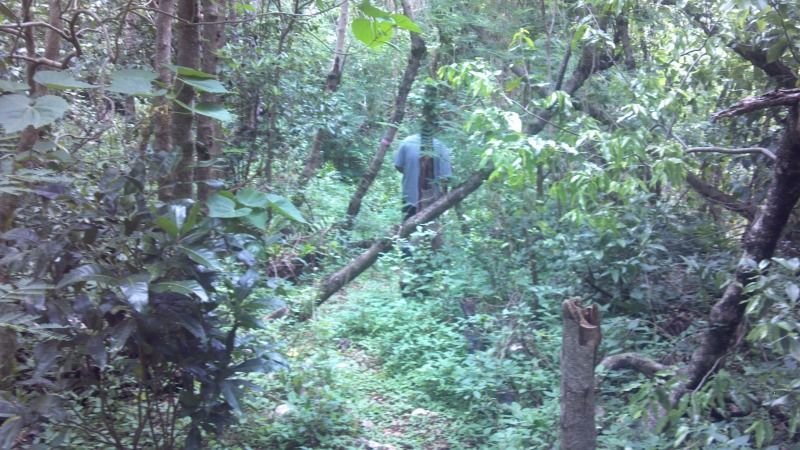
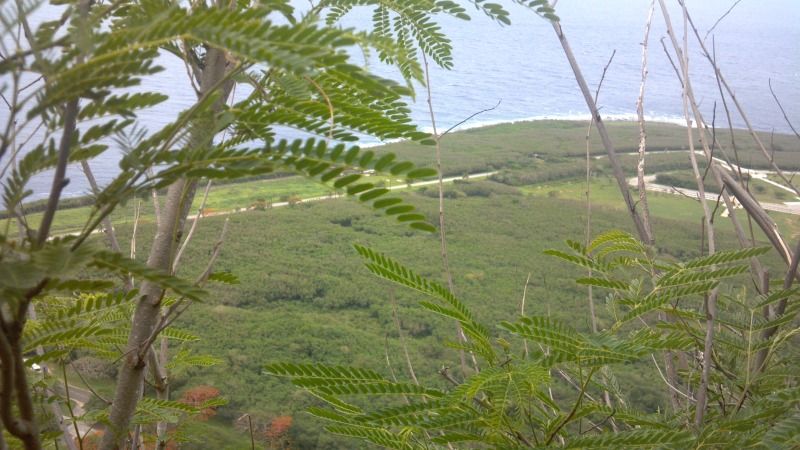 Rob and I ventured down a nature trail on the mountain's peak. It was thick with vegetation, and sometimes it was hard to move through it. I couldn't help but keep thinking about what happened in these woods. What terrible final farewells from mother to child? We were immersing ourselves in the souls of another people. Did they want us to be there? Were we trespassing on sacred ground? I felt a strong urge to recite "Kubla Kahn" by Samuel Colerage--perhaps, that would appease these wayward spirits.
Rob and I ventured down a nature trail on the mountain's peak. It was thick with vegetation, and sometimes it was hard to move through it. I couldn't help but keep thinking about what happened in these woods. What terrible final farewells from mother to child? We were immersing ourselves in the souls of another people. Did they want us to be there? Were we trespassing on sacred ground? I felt a strong urge to recite "Kubla Kahn" by Samuel Colerage--perhaps, that would appease these wayward spirits. A question kept on rising in my mind: were the Japanese right in offing themselves? From my Modern, Western standpoint, which honors individual life over all else, of course it was wrong. But still, I had a hard time judging the Japanese for what they did. Everyone lives. Everyone dies. Sometimes, dying in the right way is more important than living. The Japanese sense of self is different than ours. They cherish the community over the individual. Just take a look at this video. So again I ask myself, is it right or rational what they did? Was it right or rational for an American boy to enlist in the military, aware of his likely death? Was it right or rational for George Tweed to continue to run even as the Chamorros suffered? Surely the Micronesians critical of what Tweed did must have sympathy with the honorable way the Japanese went. It is important to remember that it was in the West where Jesus' message of 'love thy neighbor' found its most resonance. Jesus' message also empowered something else: the individual over the community. He died in a historical sense, not in a metaphorical one. He actually lived. And even he, in a way, offered his own life to send a beacon across the world. The Japanese sacrifice, even though it caused the massacres in Hiroshima and Nagasaki, saved more countrymen than we will ever know. It killed the war before the war killed all of us.
--------------------------------------------------
My great uncle smiled, "When you tell people you have been to Saipan they are going to ask you one thing: did you see the Grotto?"
And now I can say I have.
The Grotto is a cave opening. Stalactites hang from the overhead rock, and sharp stones line the bottom, a result of the constantly crashing water. What makes the Grotto truly an experience, however, is how you get there. It is at the bottom of a dangerous looking flight of stone stairs. One misstep and you will surely slide to your doom. Luckily, I don't have much of a fear of heights, so I made it down quite quickly. Rob had a tougher time of it. Each individual step is quite steep, usually moist from the tropical air. You really have to pay attention to what you are doing.

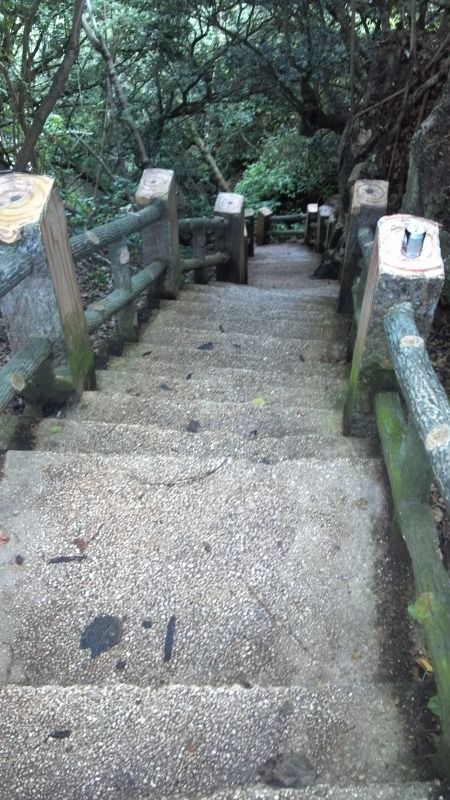
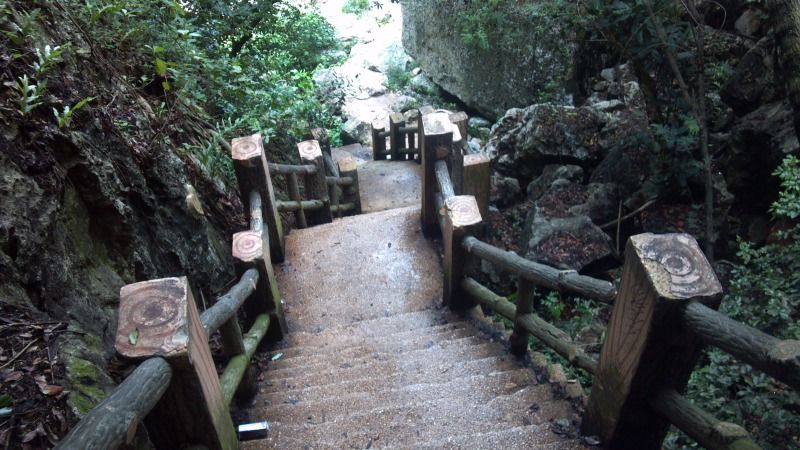
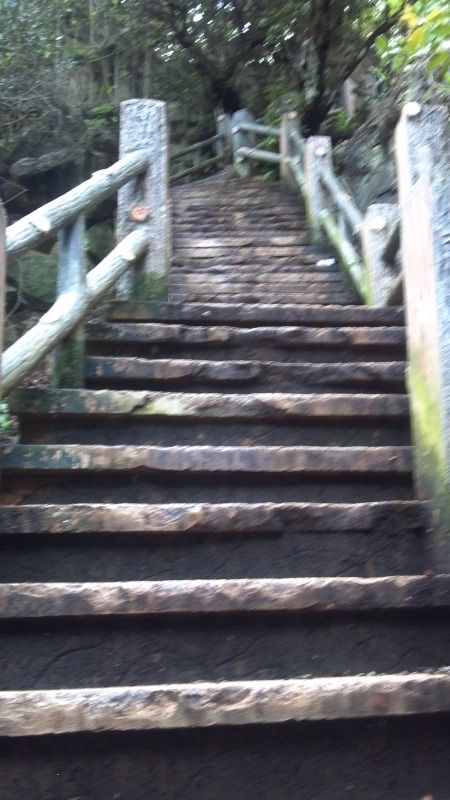
But when you arrive you are treated to this:
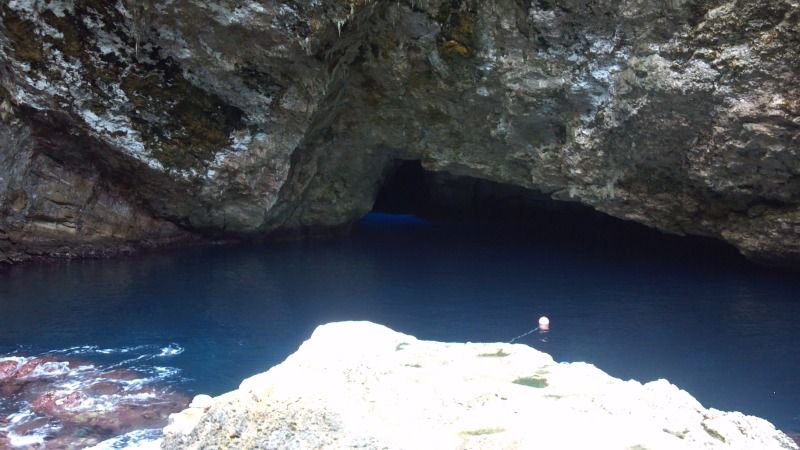
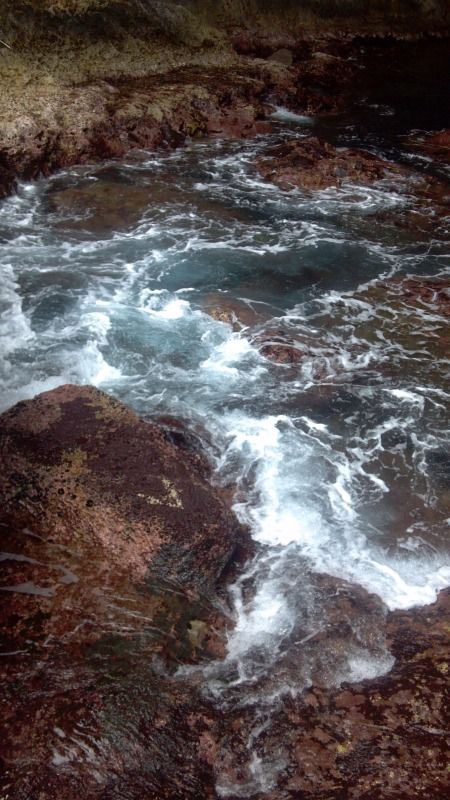
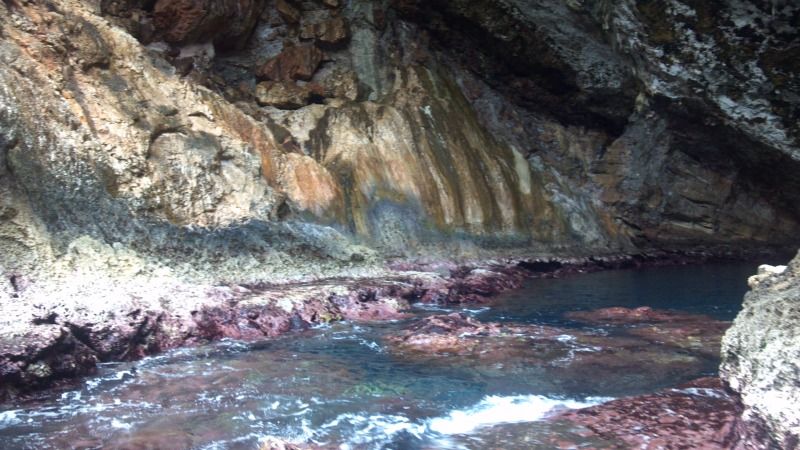
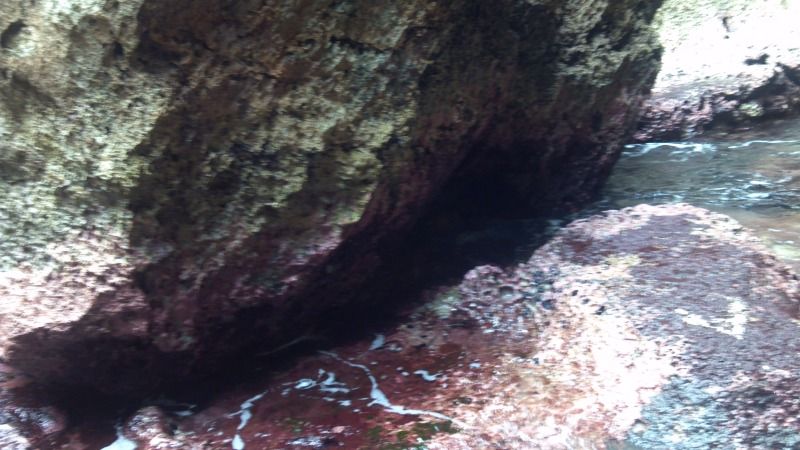
The dangerous walk down is worth it. On my way back, however, I happened to get behind a tour group of Japanese. What I found was shocking and hilarious. If I stared forward, I was looking directly at a cute girl's butt. Seriously, it was a great view. But for modesty, I looked away. I didn't want to be "that guy." I think one of the girl's friend realized what was happening, so she walked behind her. I was actually thankful. It was hard not to look, especially when you are ascending up the death-steps. I tried to take a quick pic of the event to remember it by however.
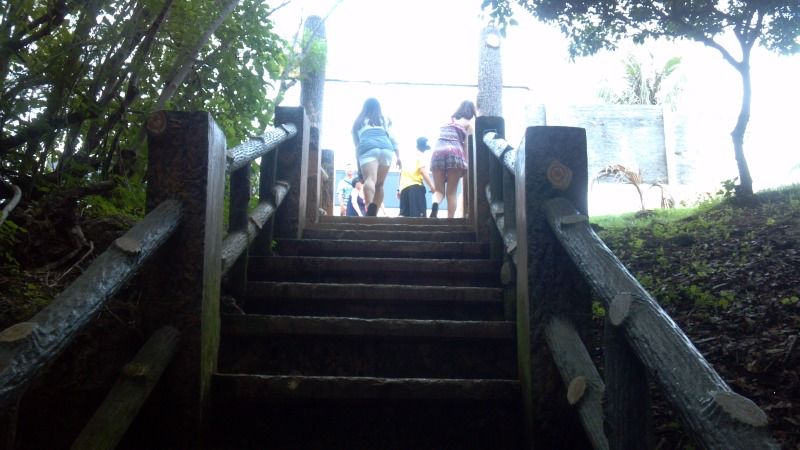
I also finally got a picture of the islands' many geckos.
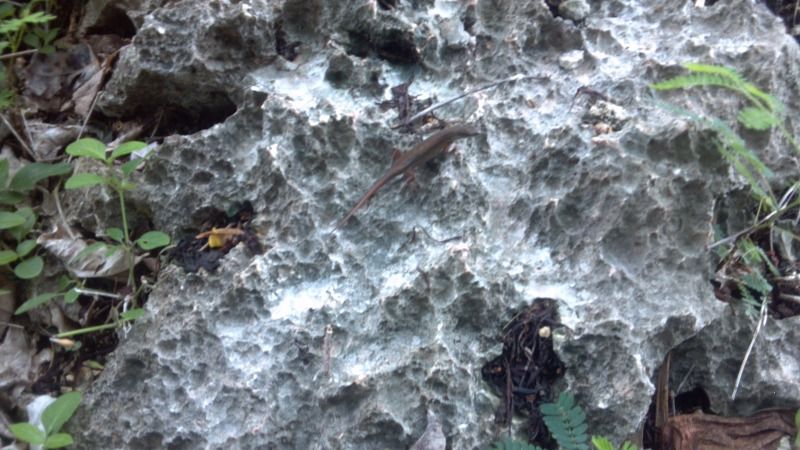
Our next stop was Bird Island.
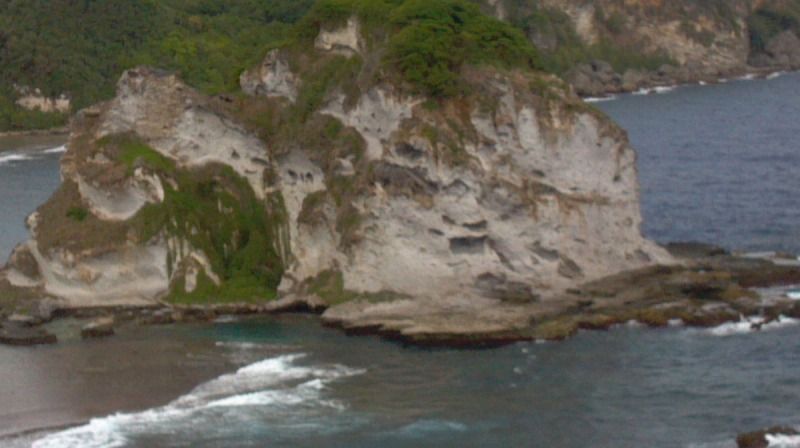
Apparently it should be covered in all kinds of avians, Doctor Seuss' poem style. I found very few birds, but a lot of Chinese tourists who were taking pictures. I was walking through a maze of photographs, trying to avoid messing up somebody's rectangular memory. But there it was, out there on that shallow ocean, thrusting its stony head from the waters. I couldn't help but have a smile on my face. Where the hell was I? Reddit had an article today which talked about "Paris syndrome". I have to admit to having a bit of that, especially when I was on Saipan. It's hard to place yourself. You have known something your entire life and only have romanticized images of "out there." When you are actually "out there" you feel disassociated with your body. Who are you? Your gage of who you are is torn asunder. It's my feeling that this a good thing. Life is a constant series of little deaths and rebirths, happening daily. Sometimes it's obvious, something it isn't. When you change locations, you get a real sense of losing yourself. It's no longer easy to dismiss it and move on, you are stuck in the "death" of where you came from.
--------------------------------------------------
We left Saipan without incident. However, I think I learned a lot of things--the world is a huge place. It's easy to forget when you are sitting in the box facility of your home reading a book or surfing the web on a Kindle. History is happening as we speak, a billion little events across the world forming together to make humanity. It's unimaginable, that great mythic net. There are thousands of shrines on the islands of the Pacific telling us to remember peace and love each other, but one can't help but have a sadness looking at them--violence, war, death, it will never go away. In another hundred years somebody will be fighting somebody else, and these little islands will always seemingly be at the mercy of the great powers.
My next blog will be a tour of Tumon, Two Lover's Point, and a Chamorro festival. And maybe the beginning of something different.
No comments:
Post a Comment